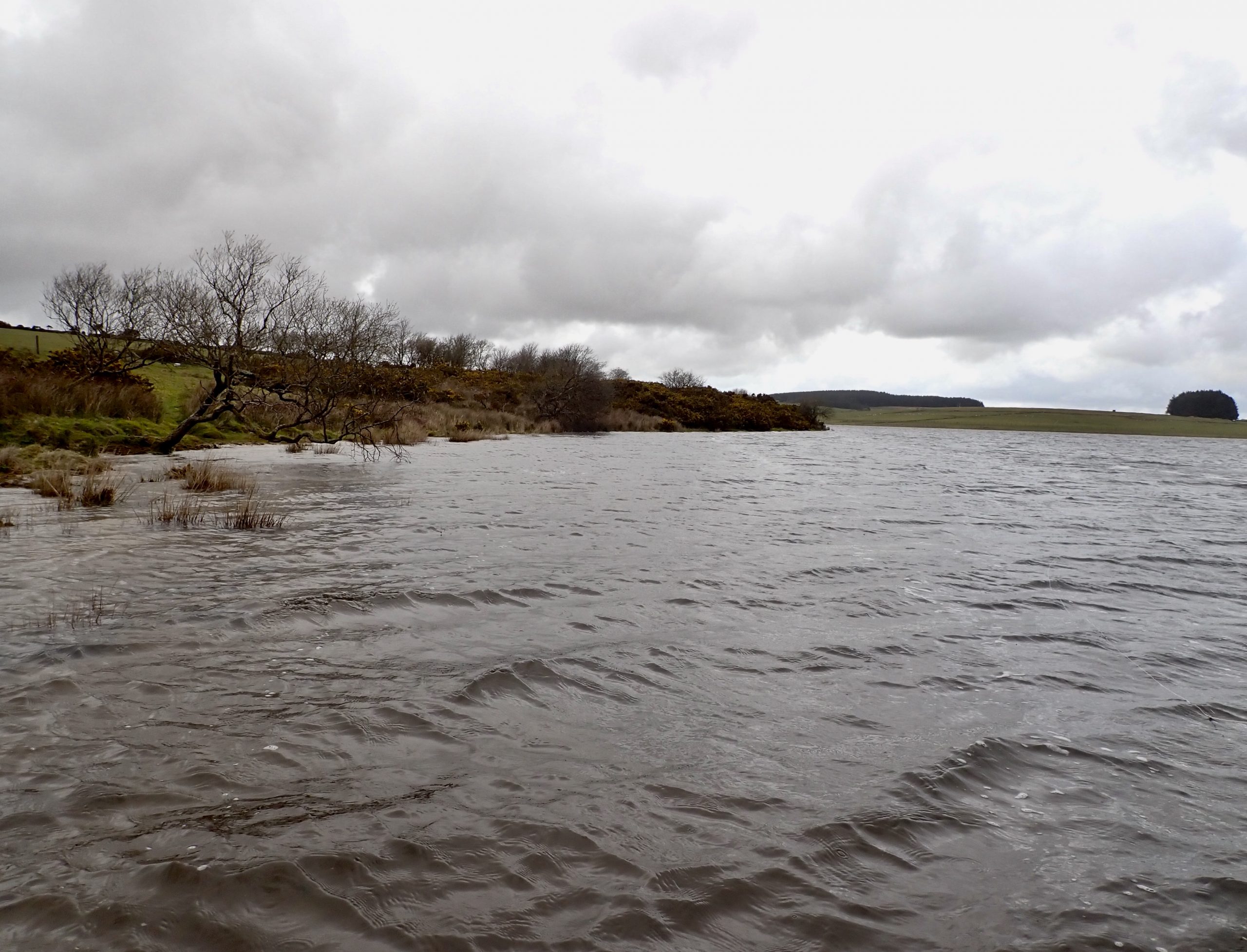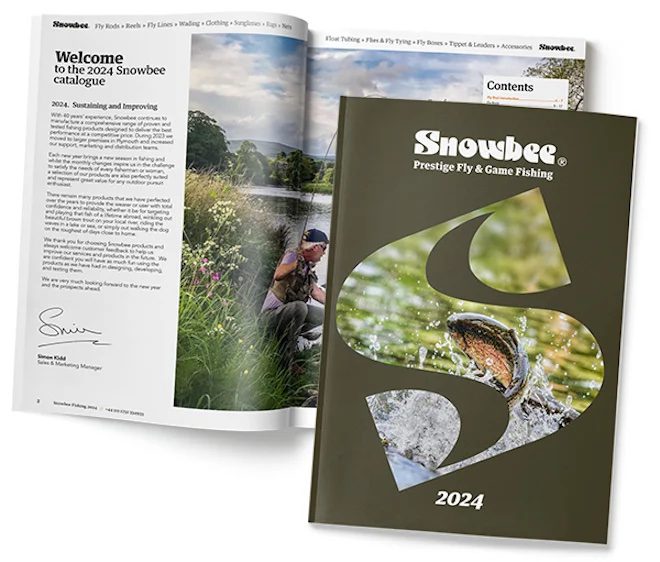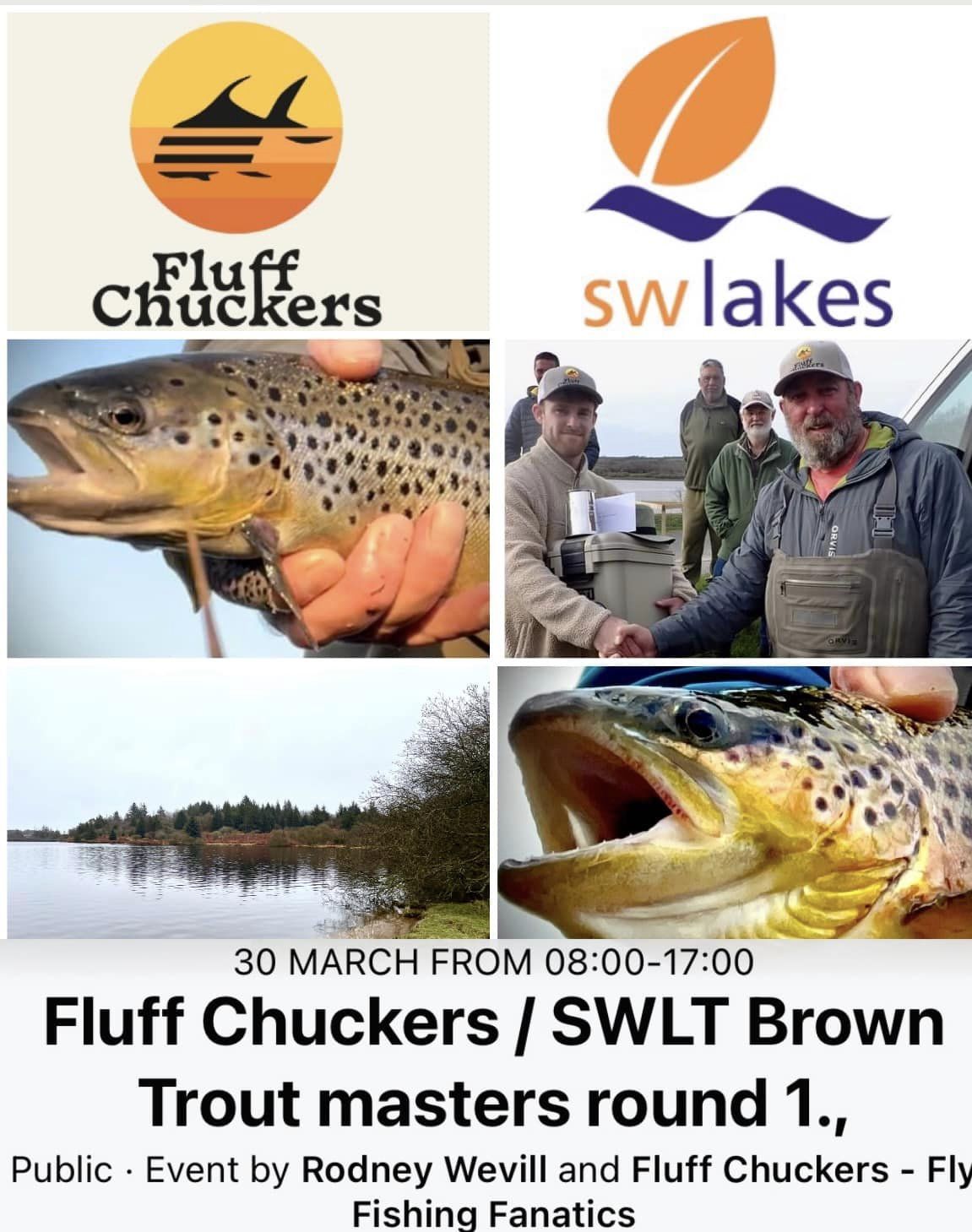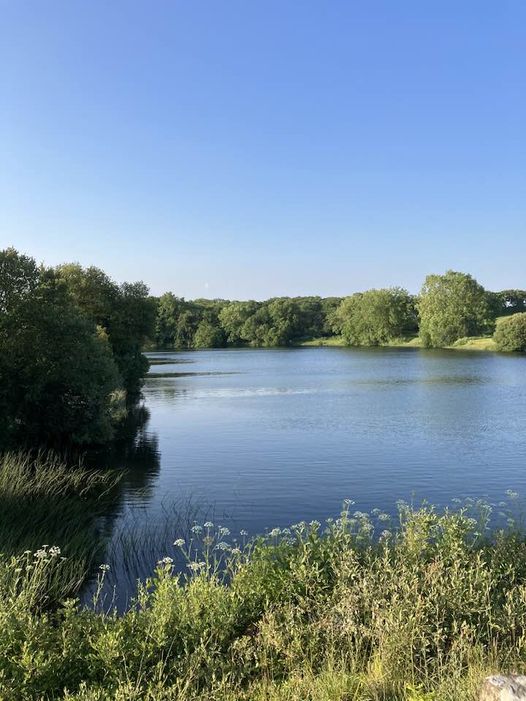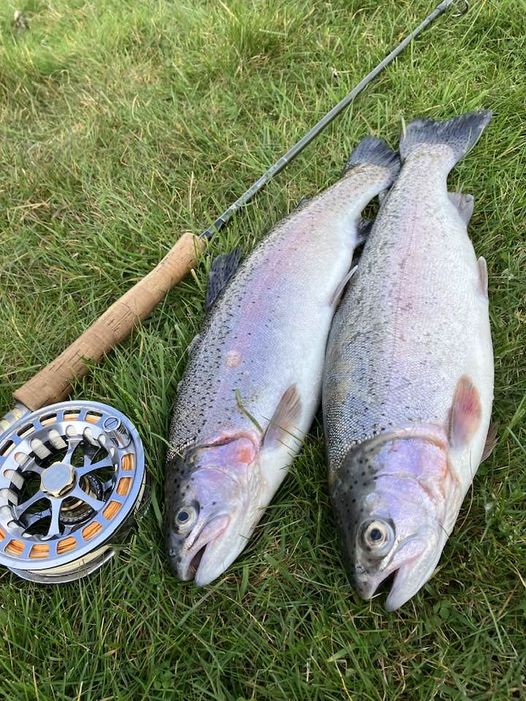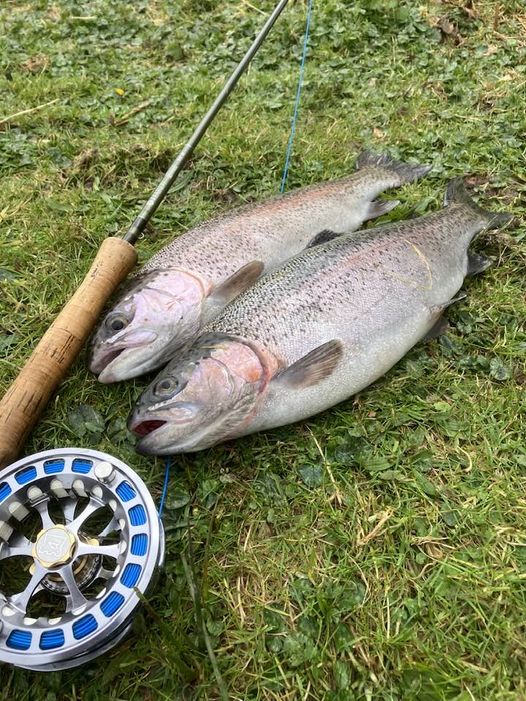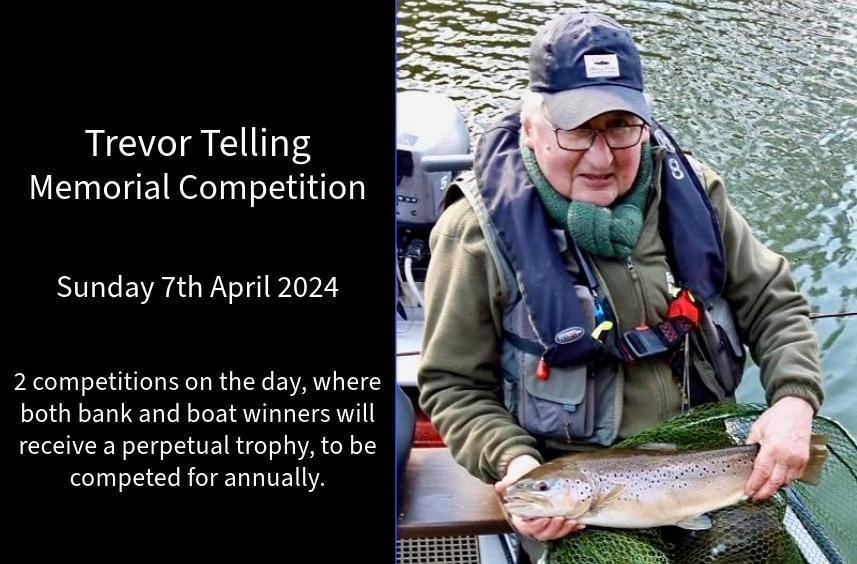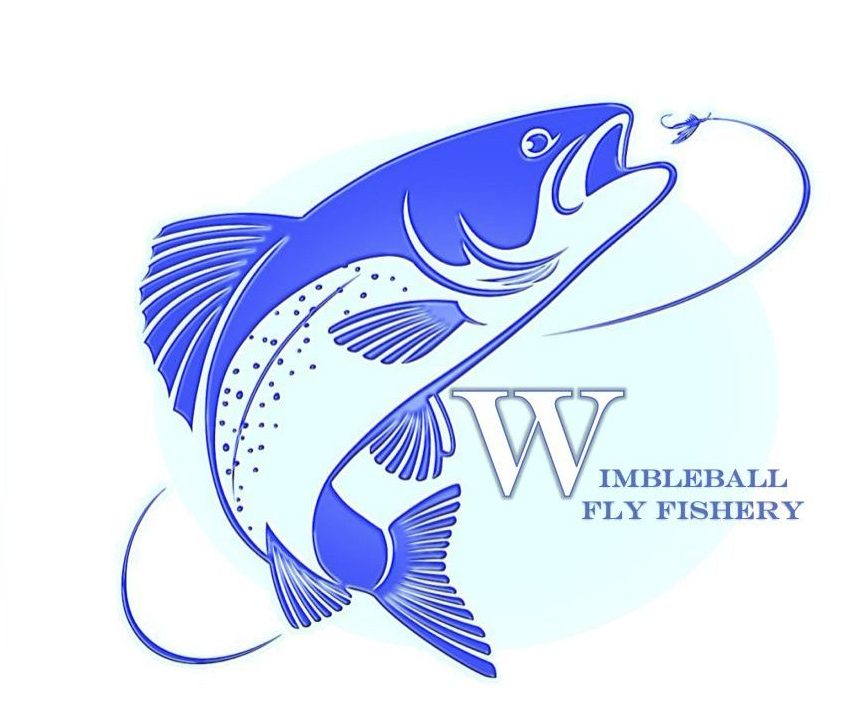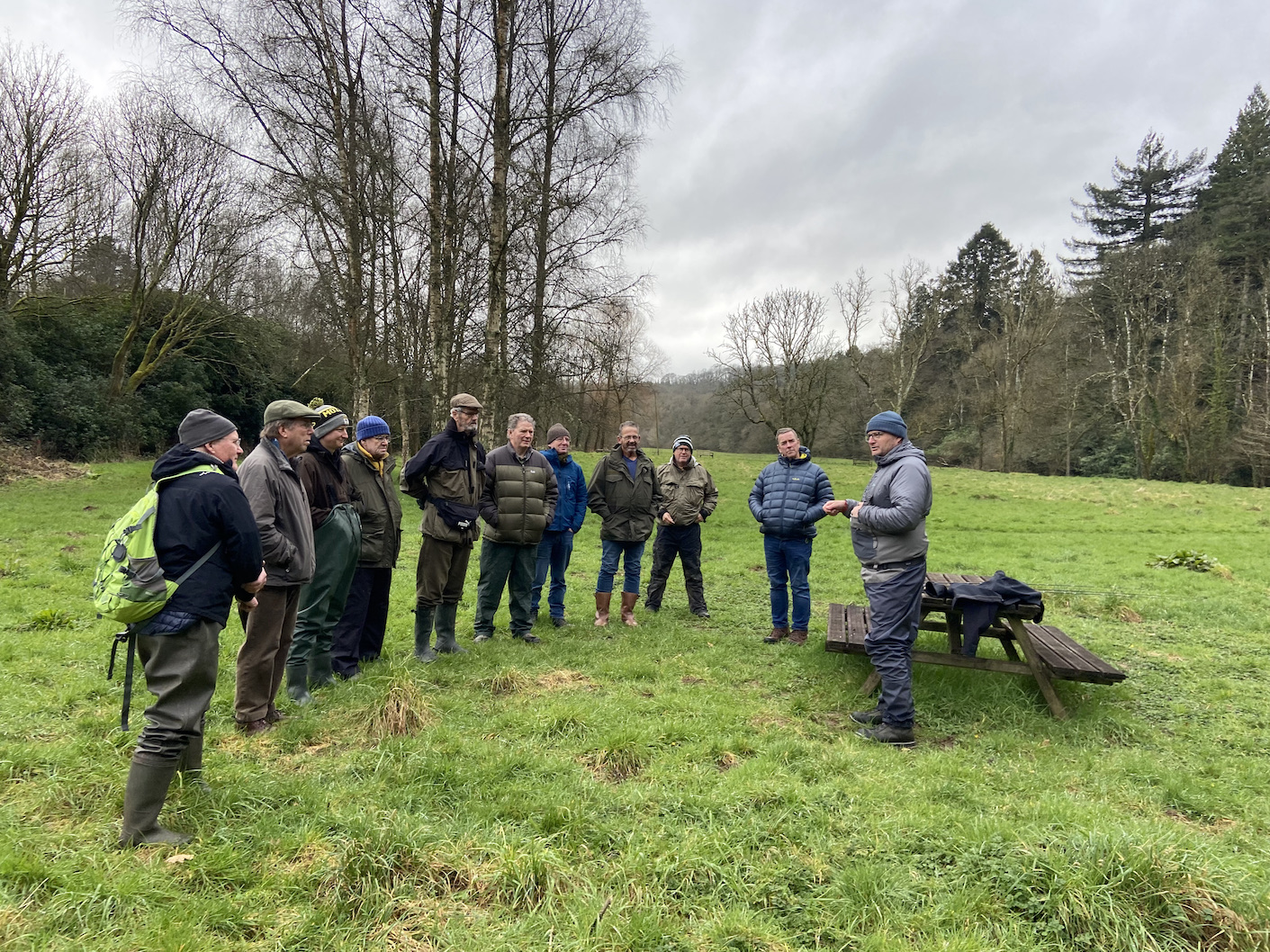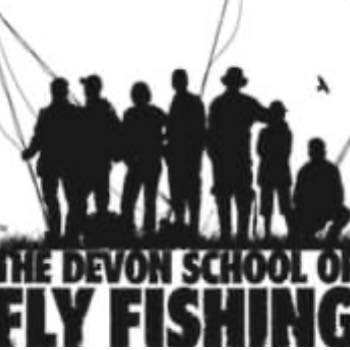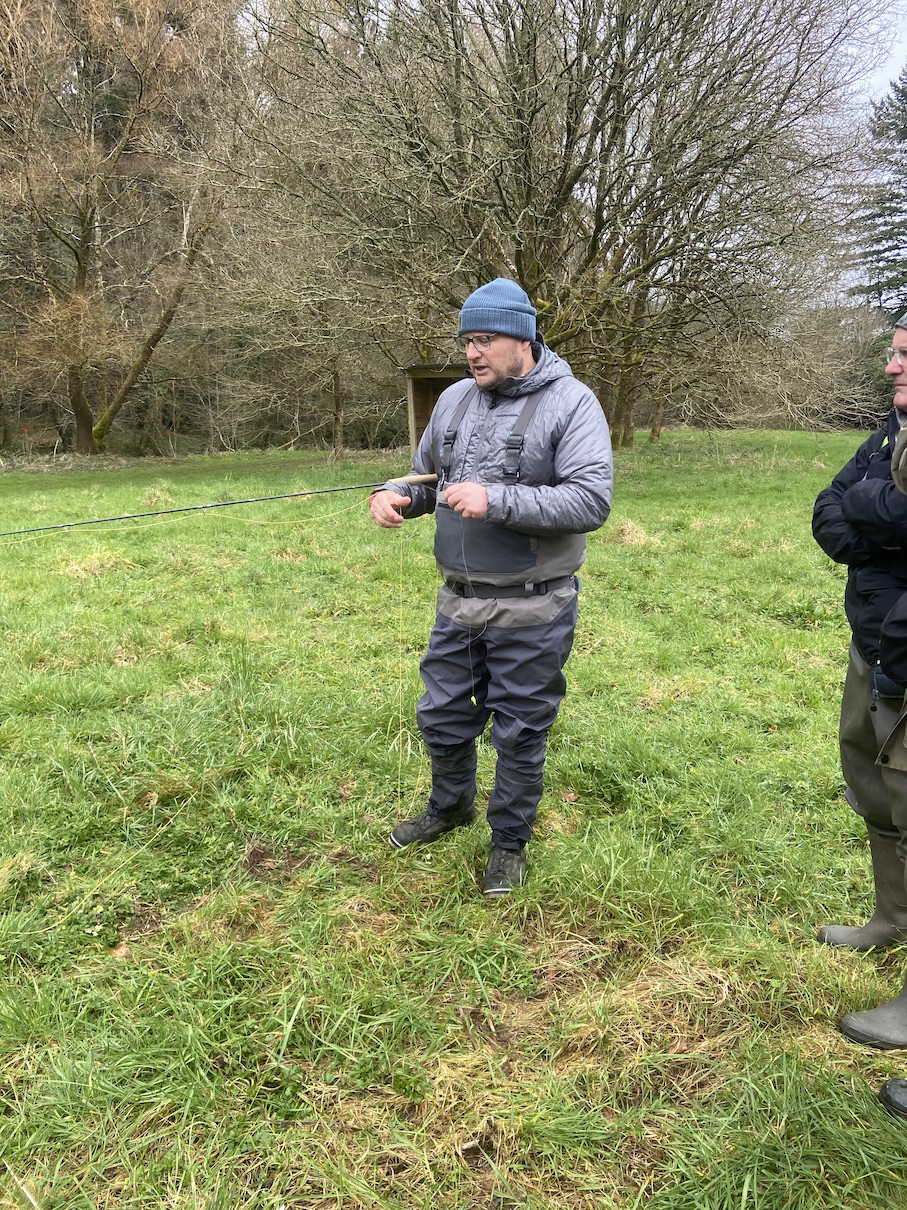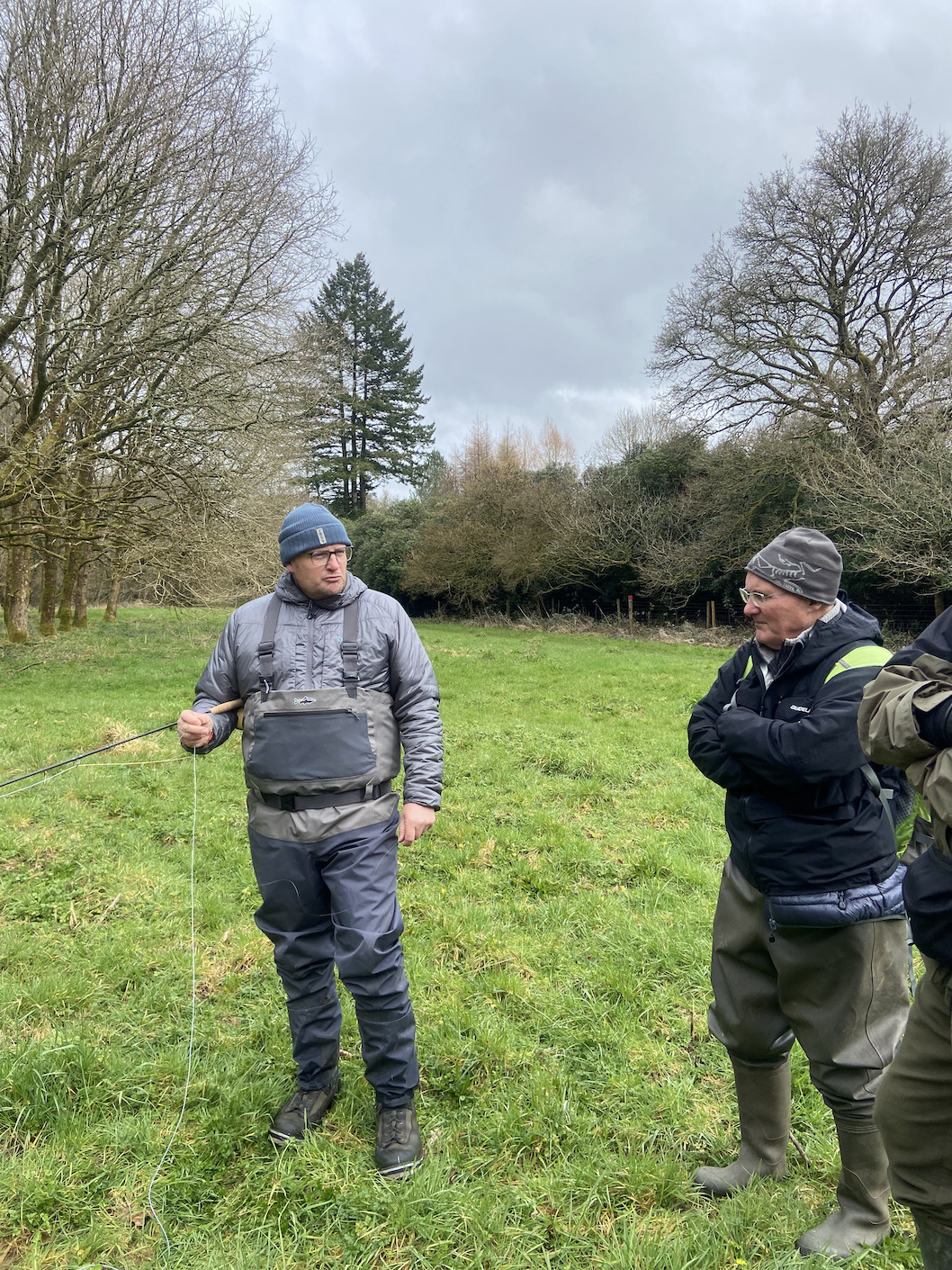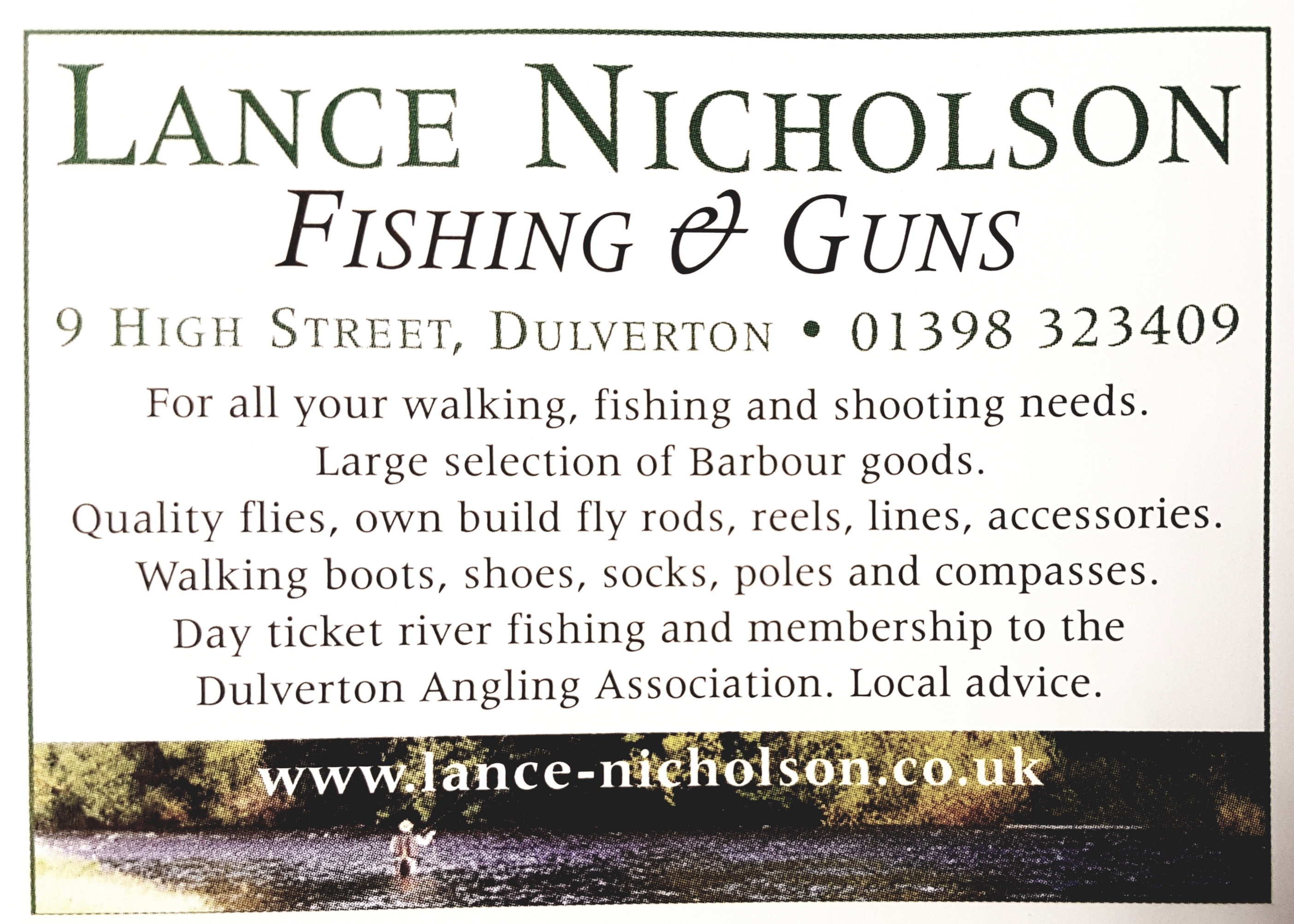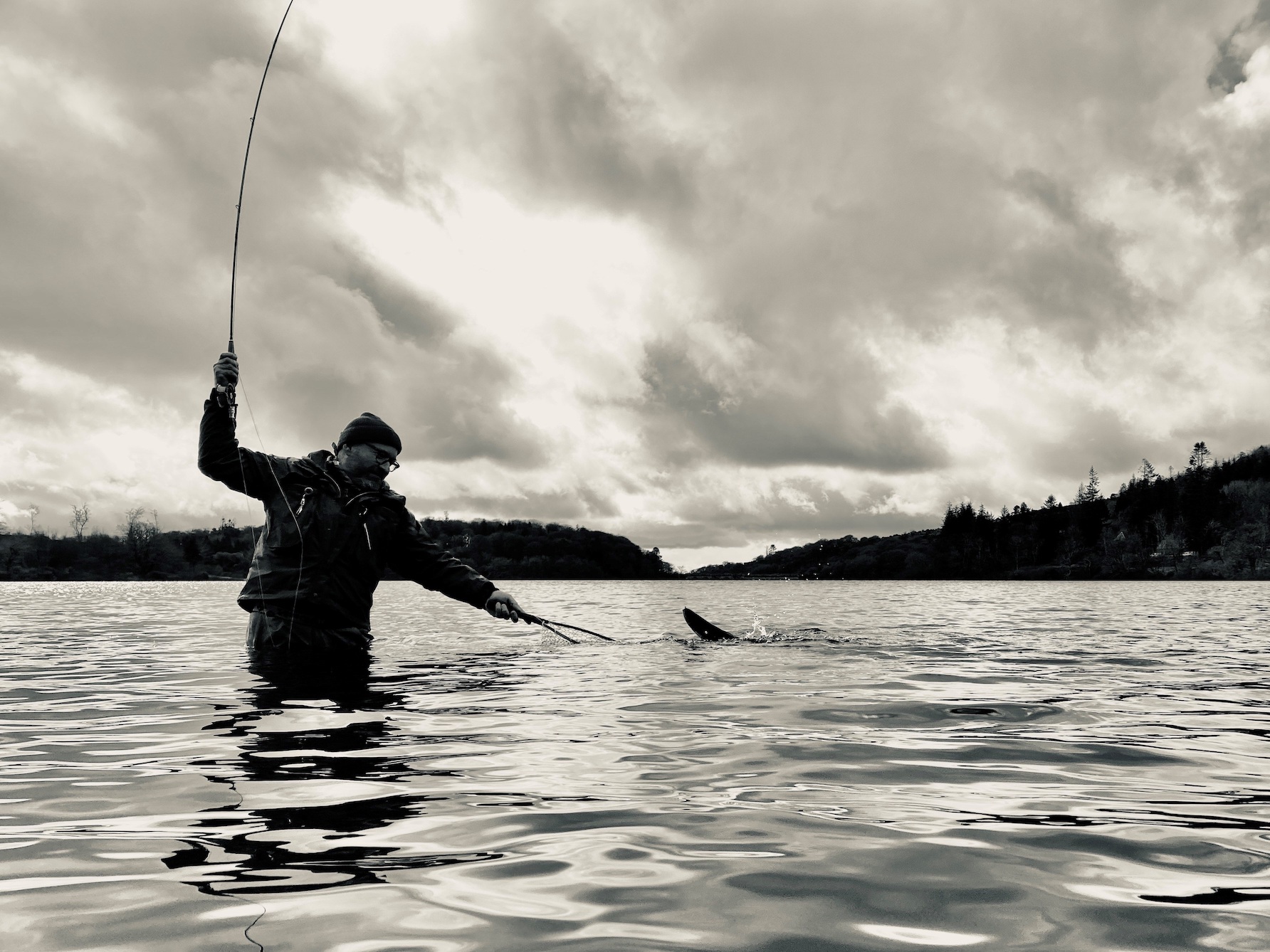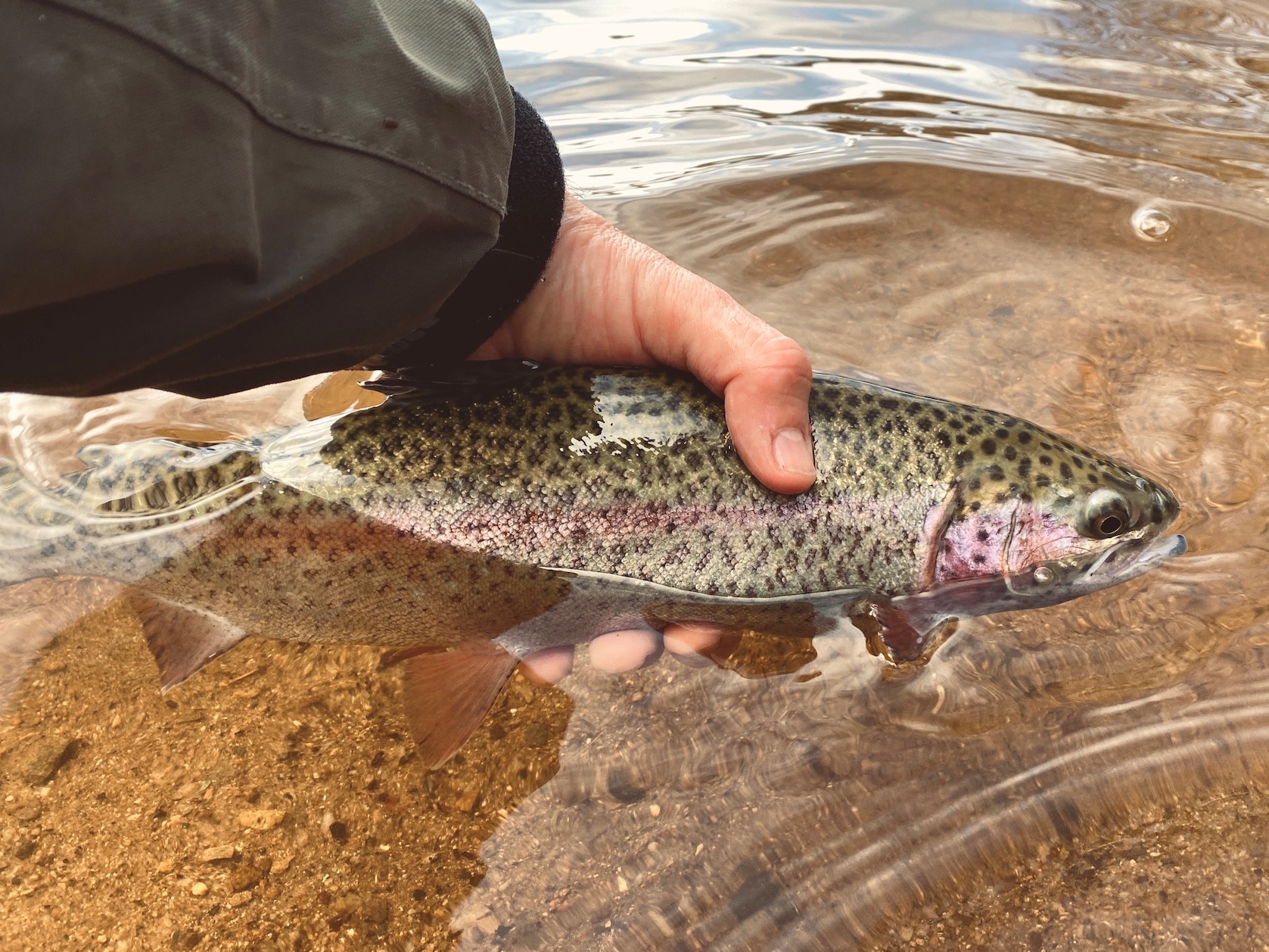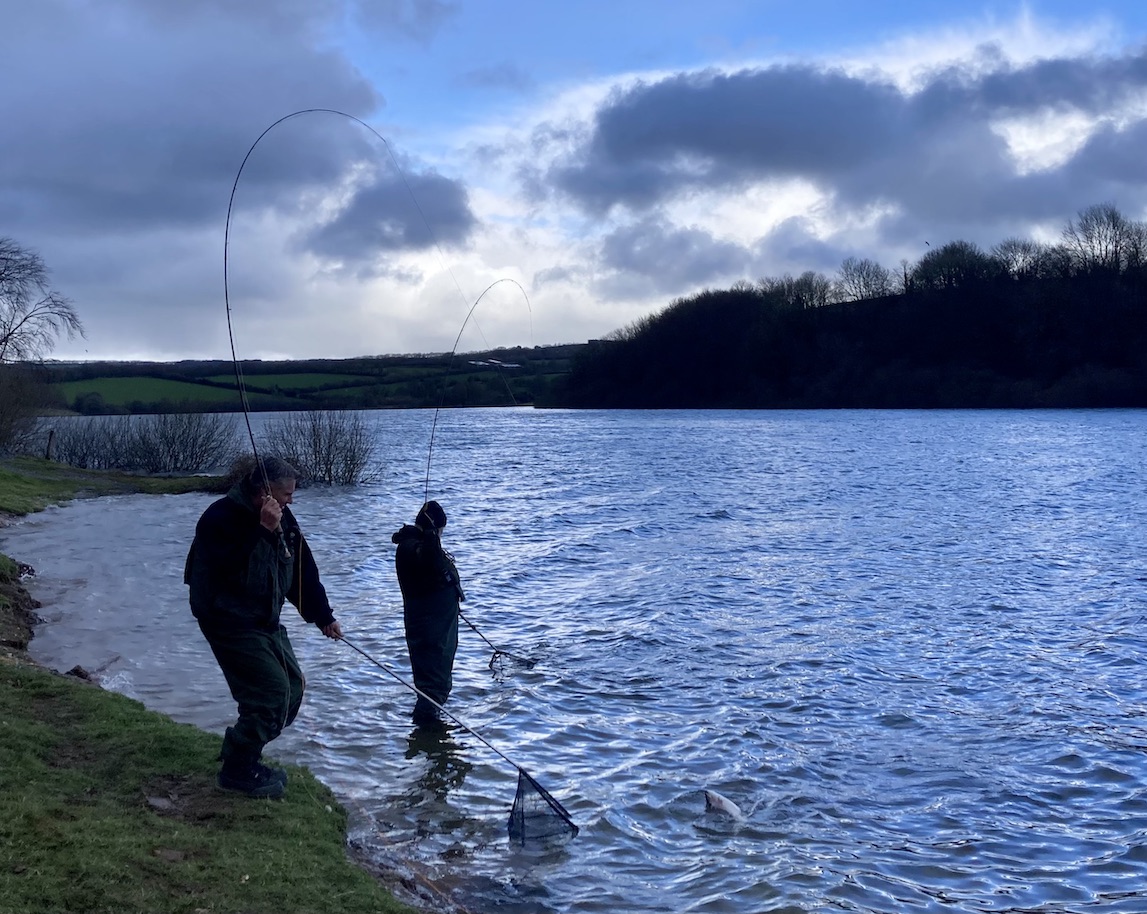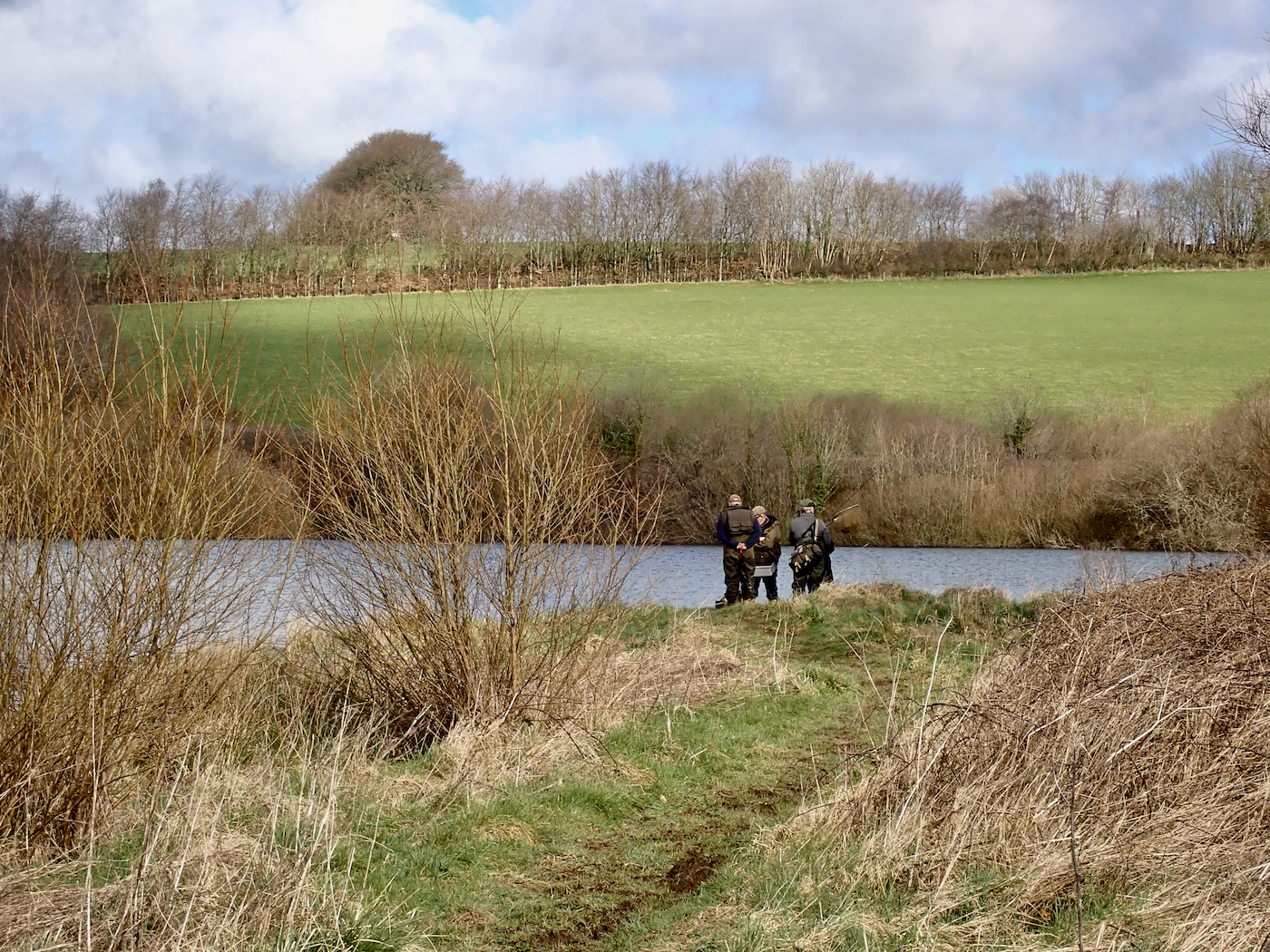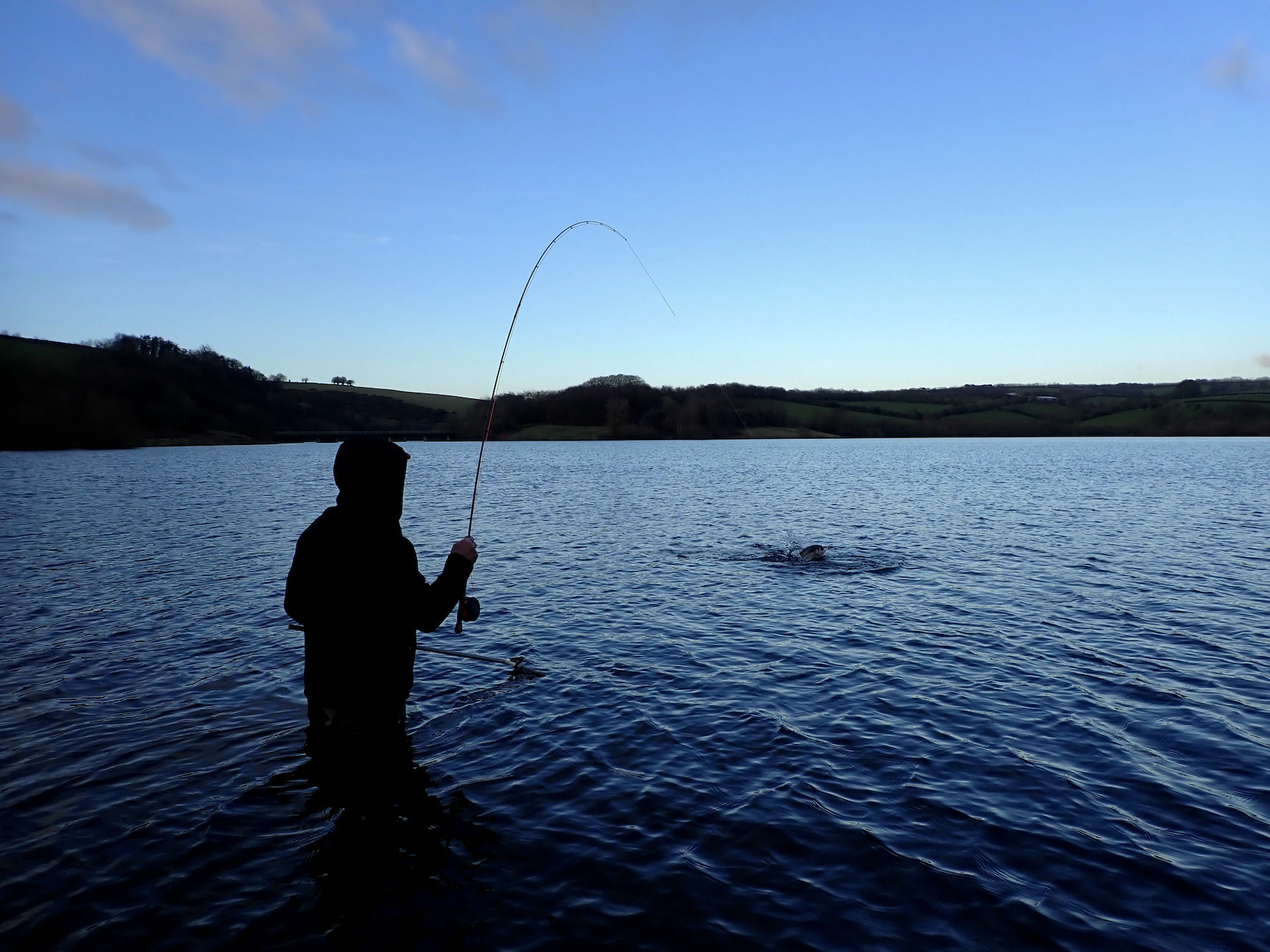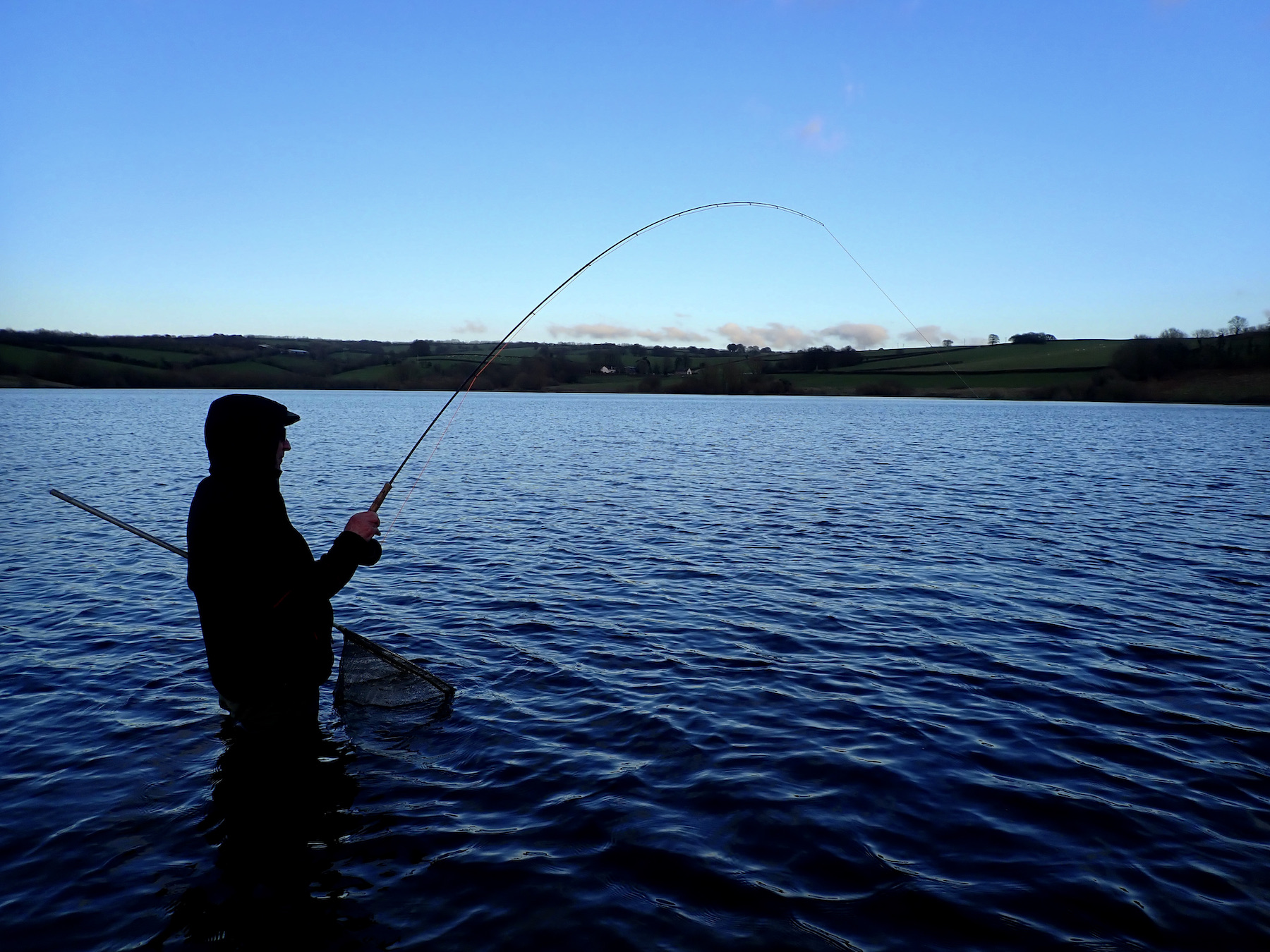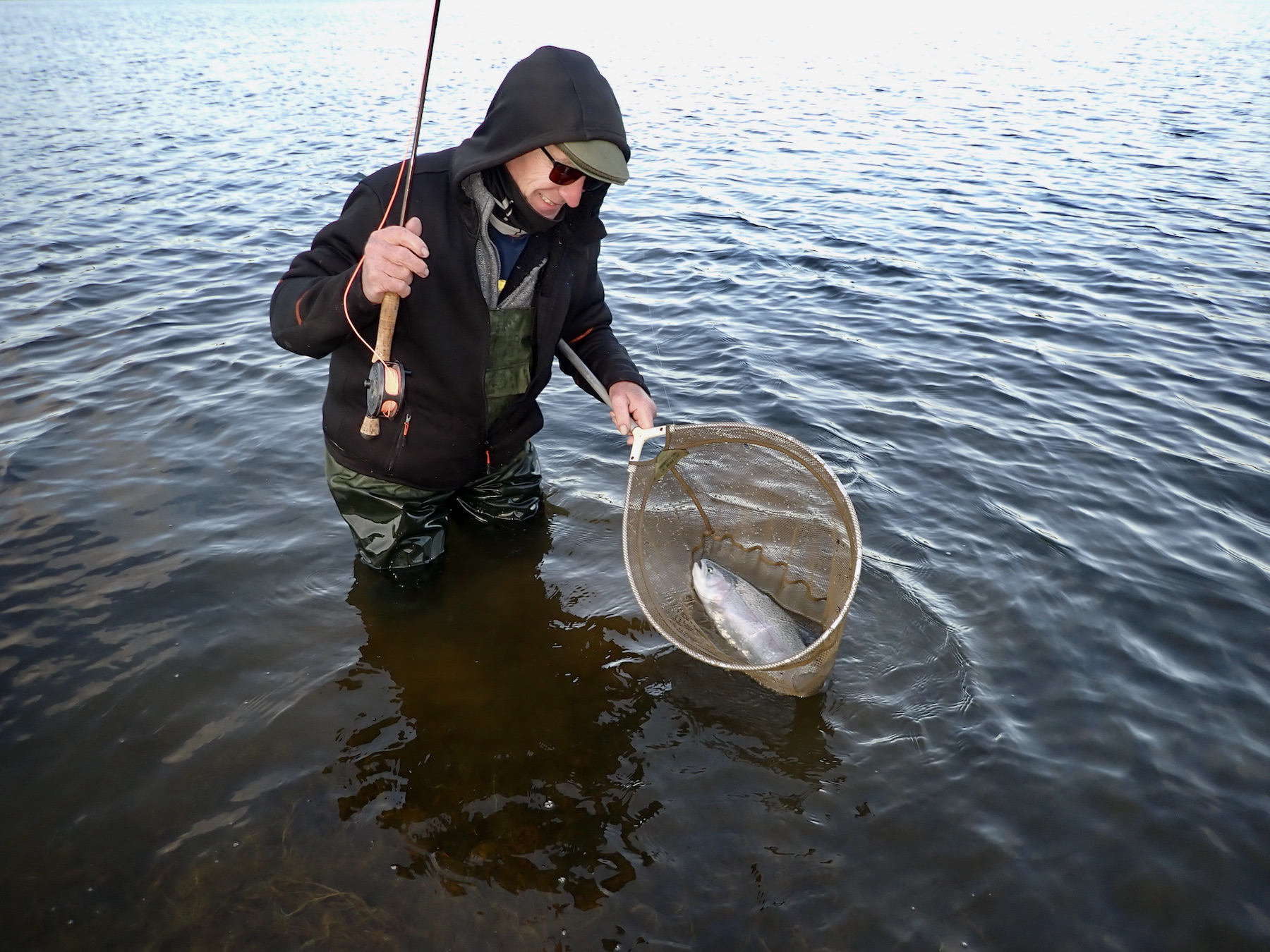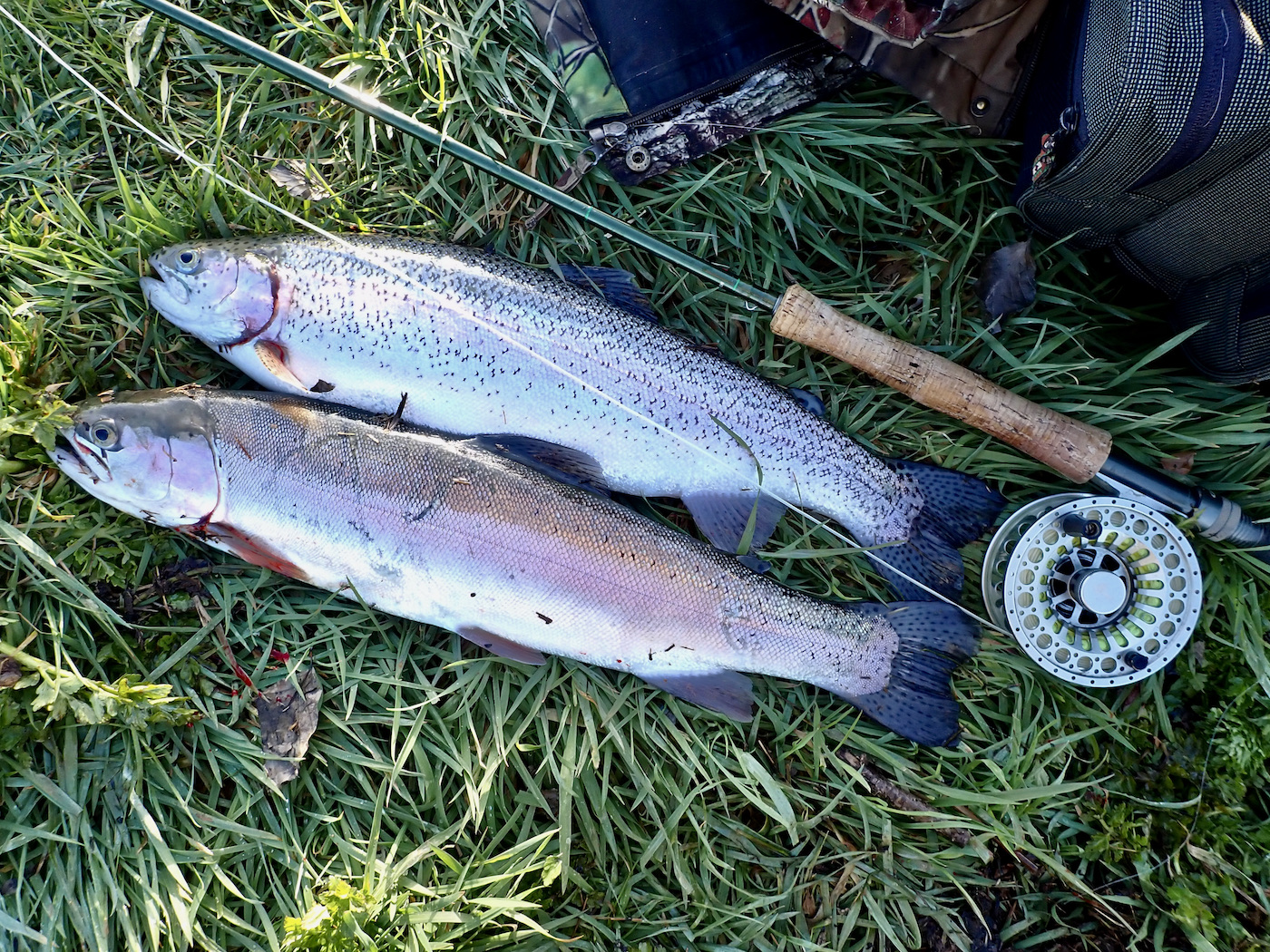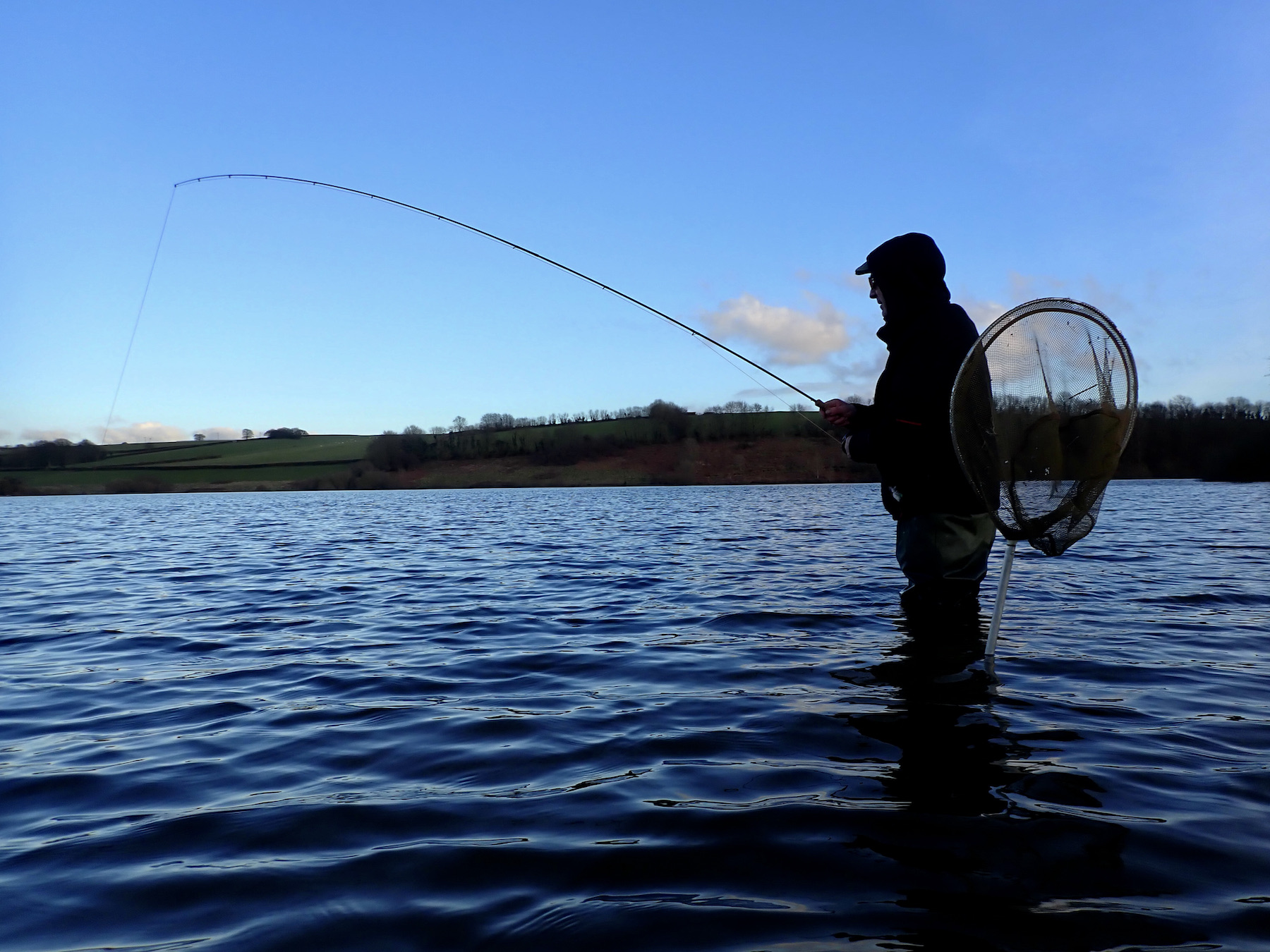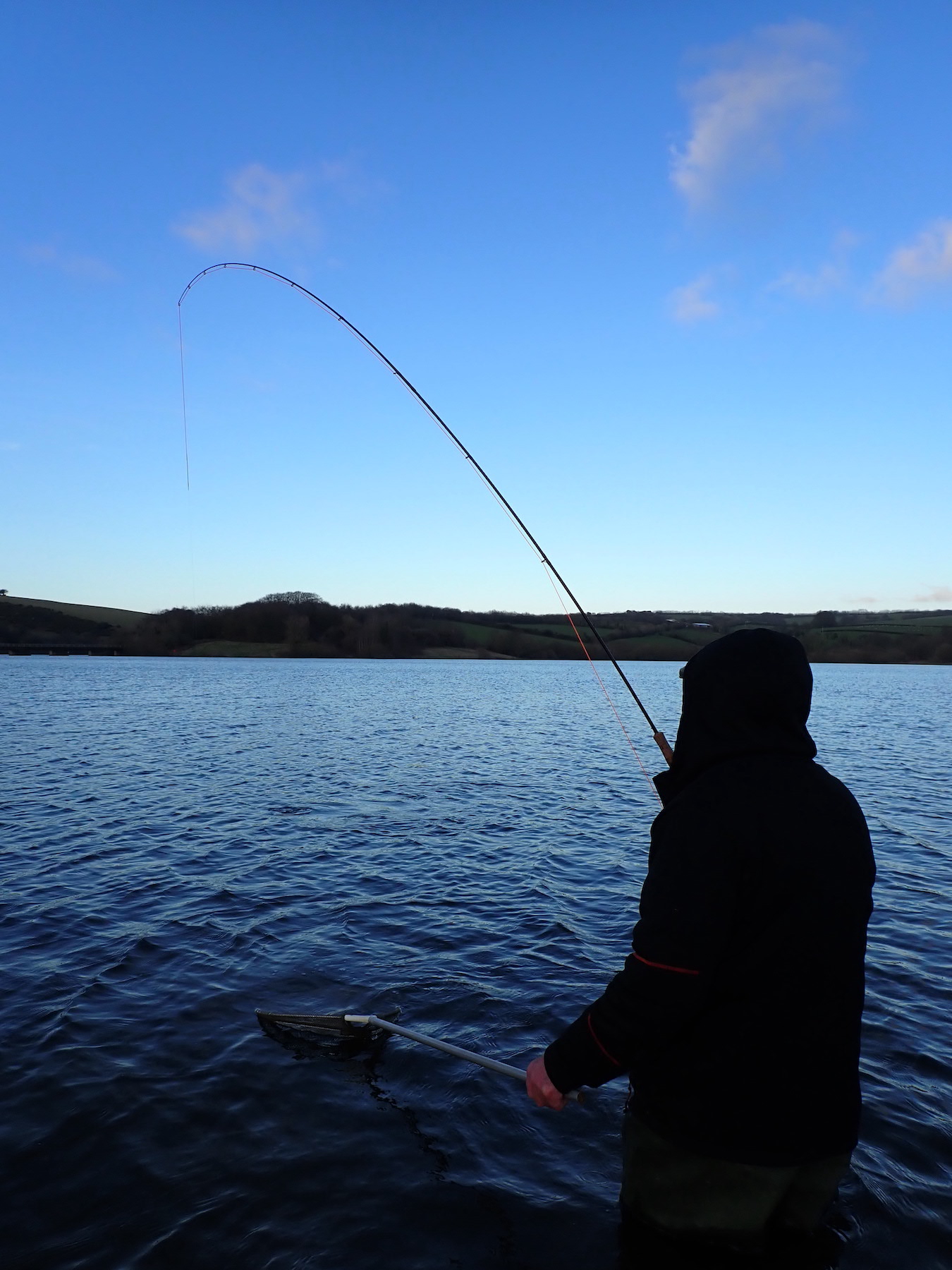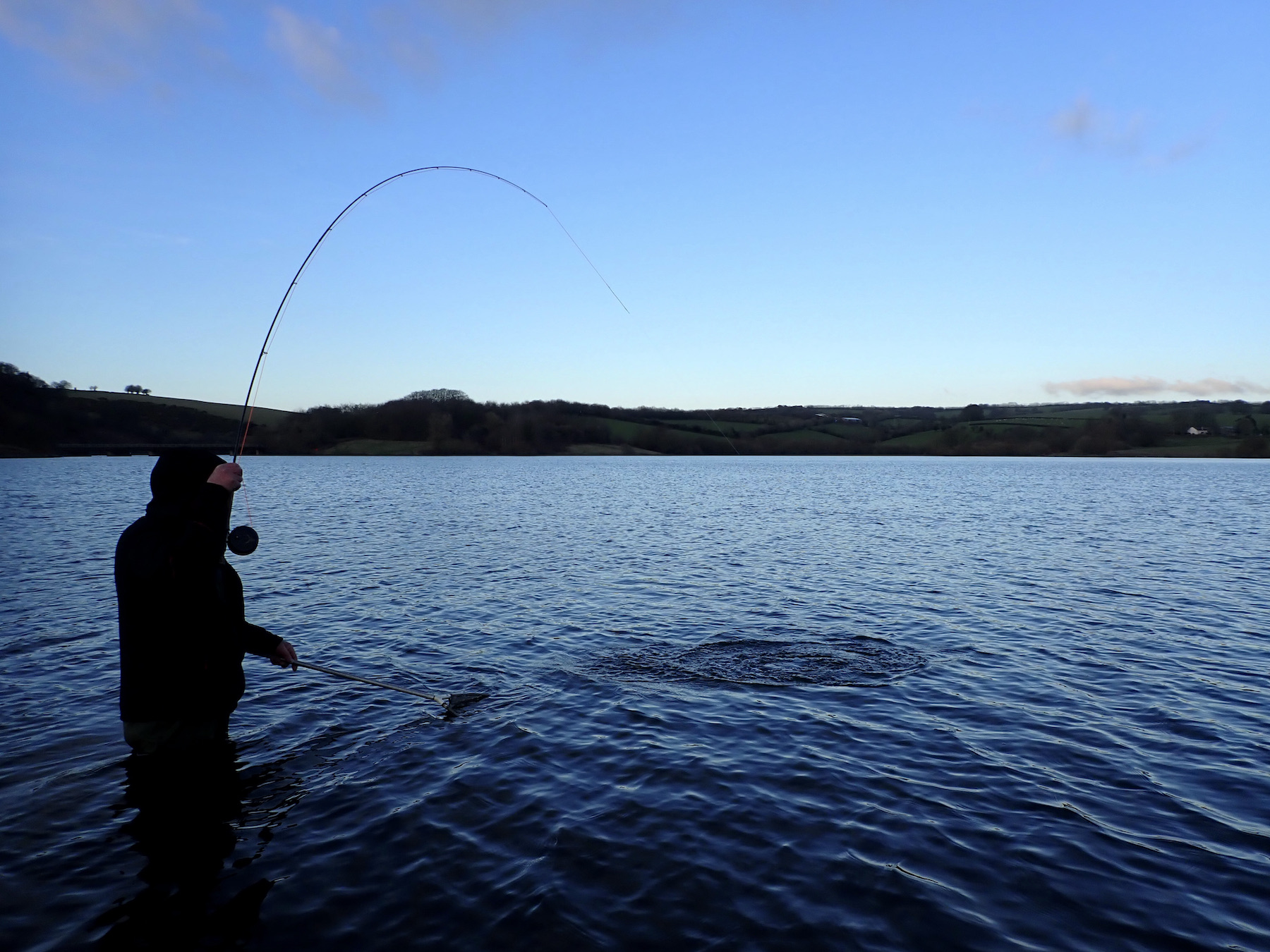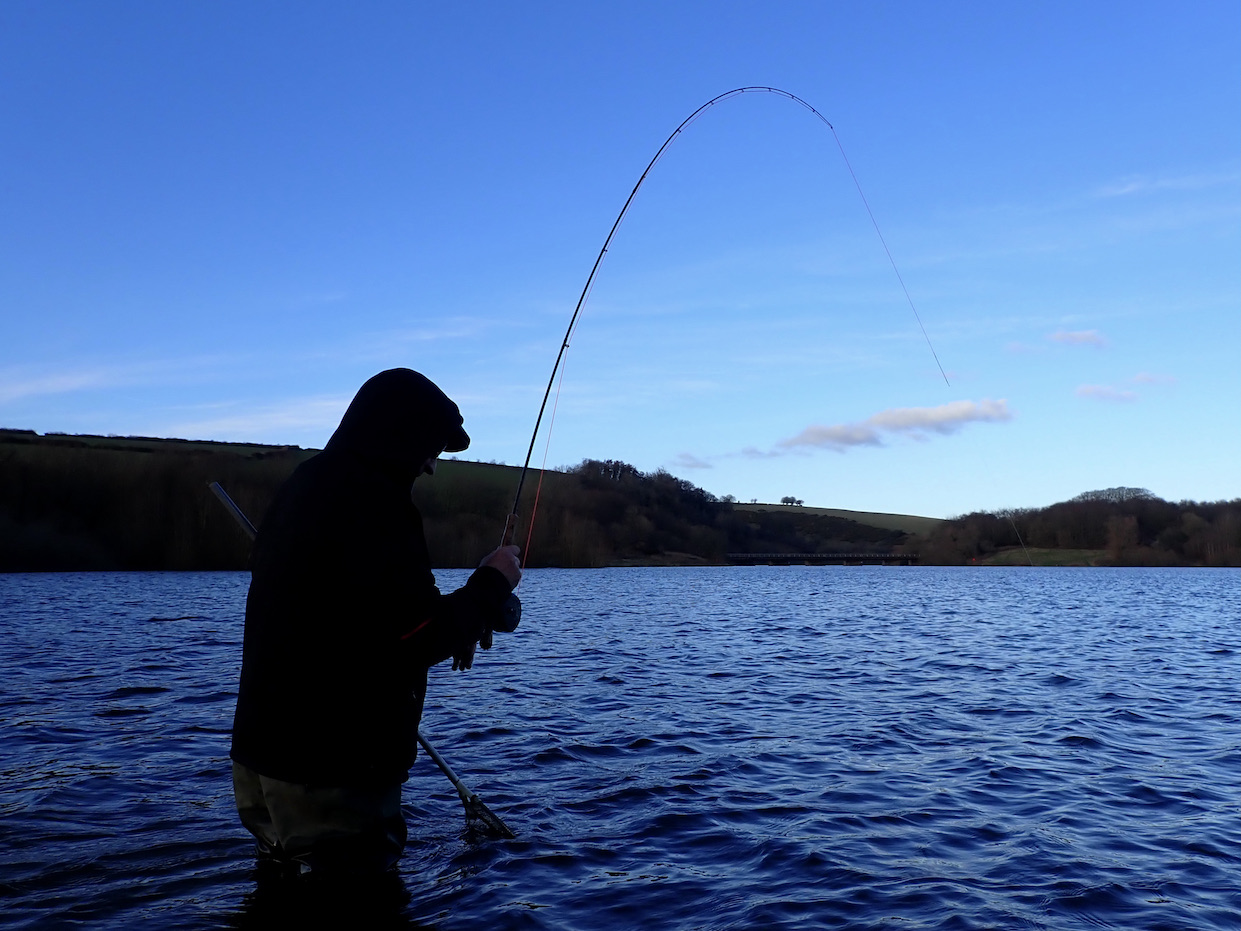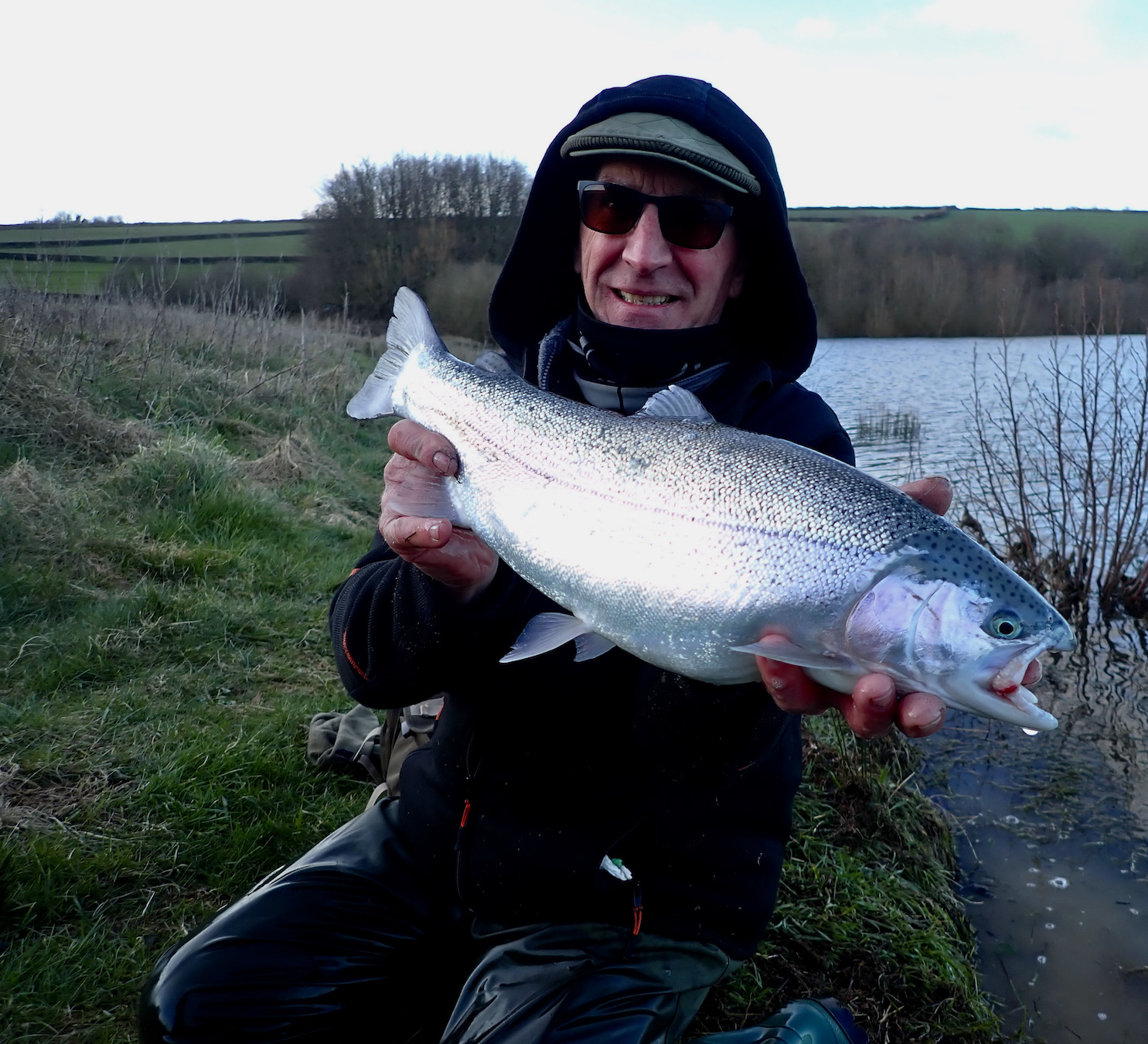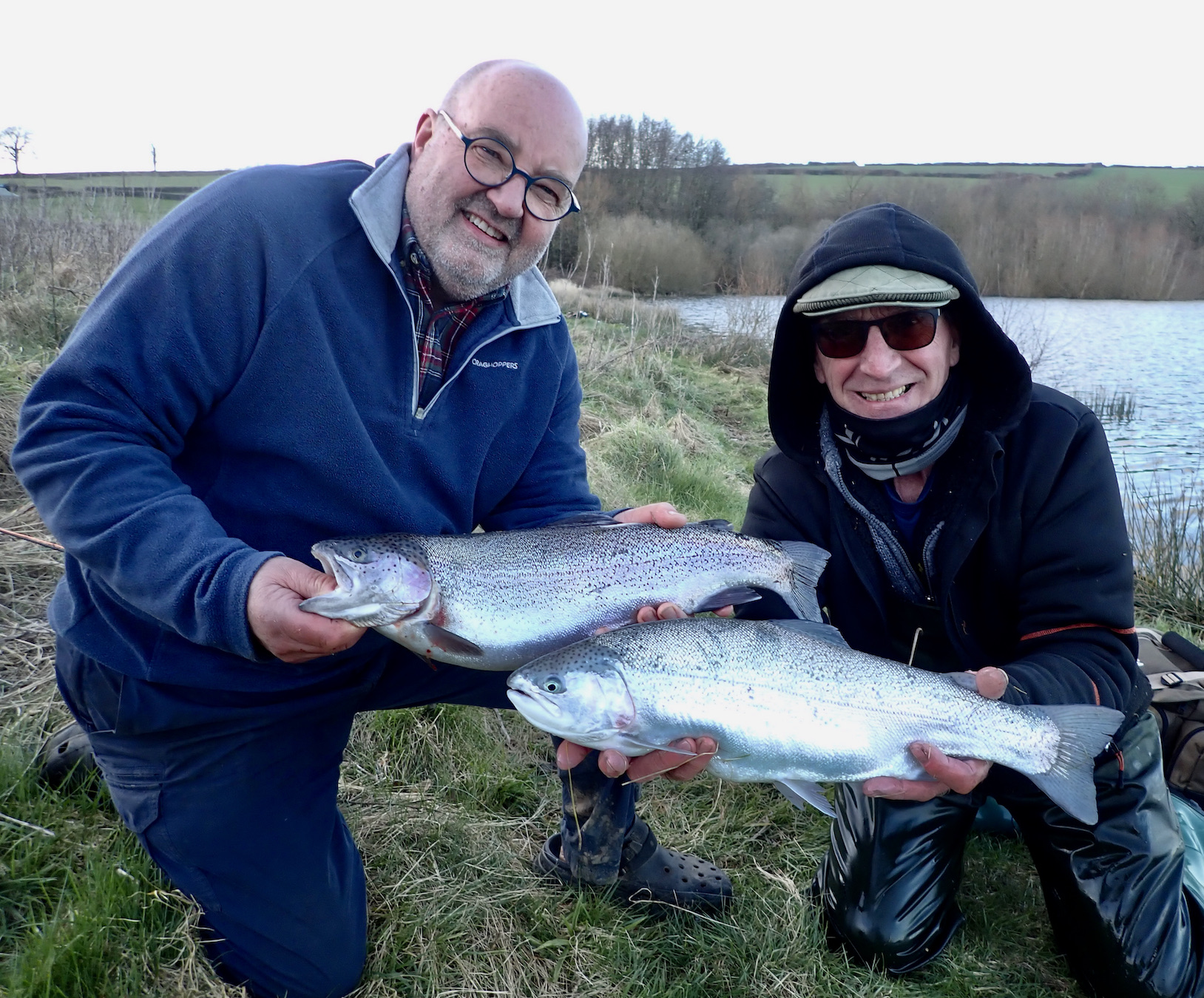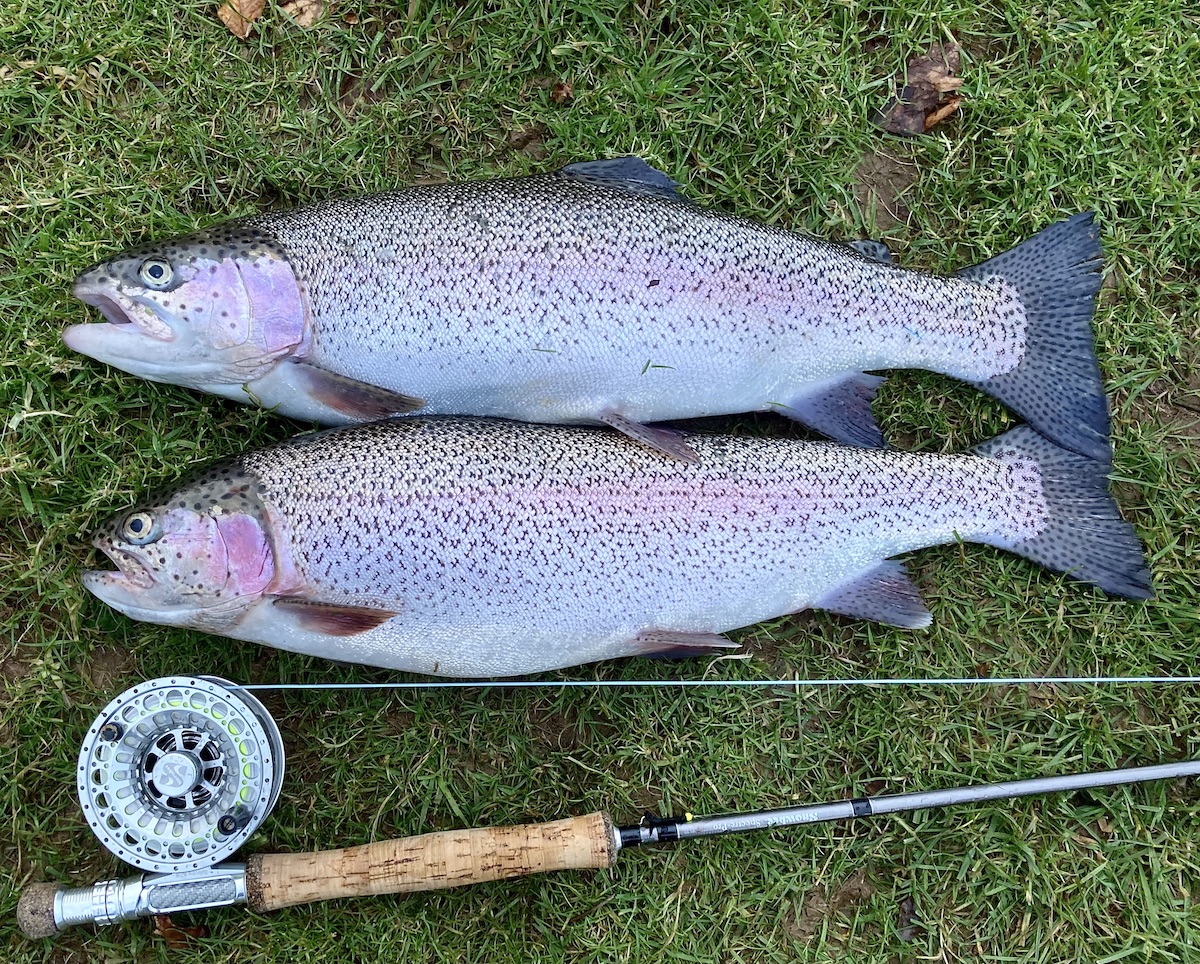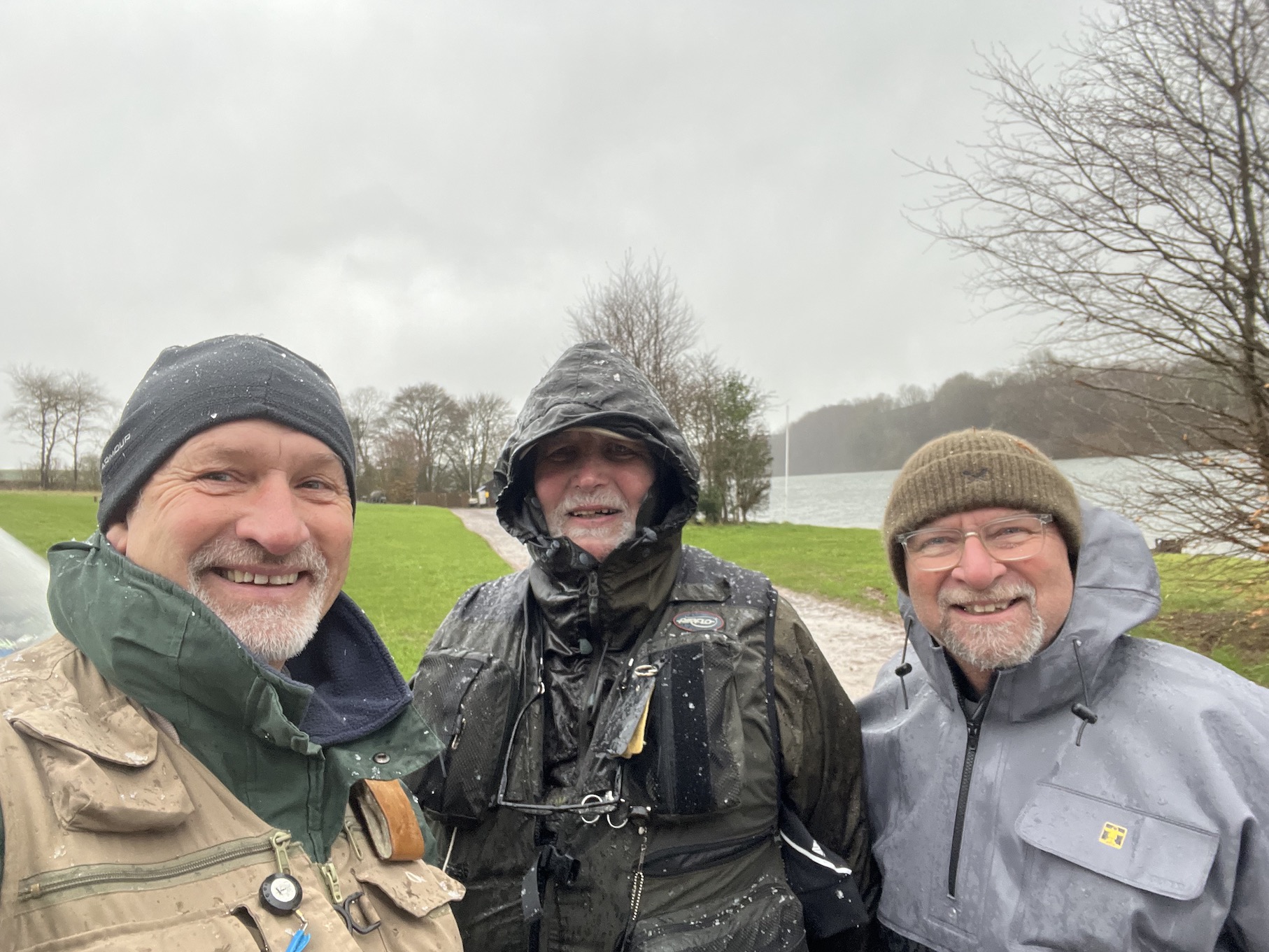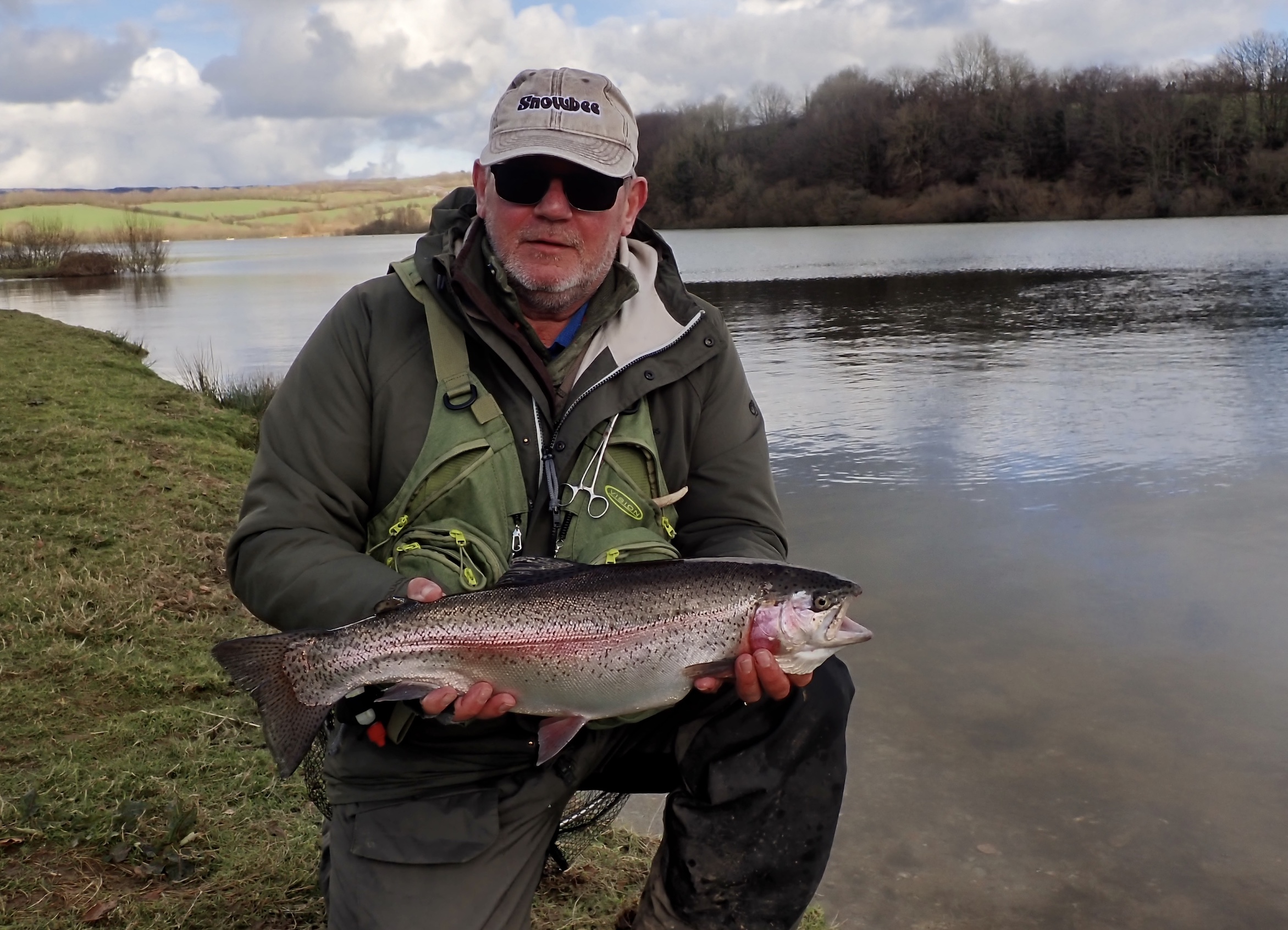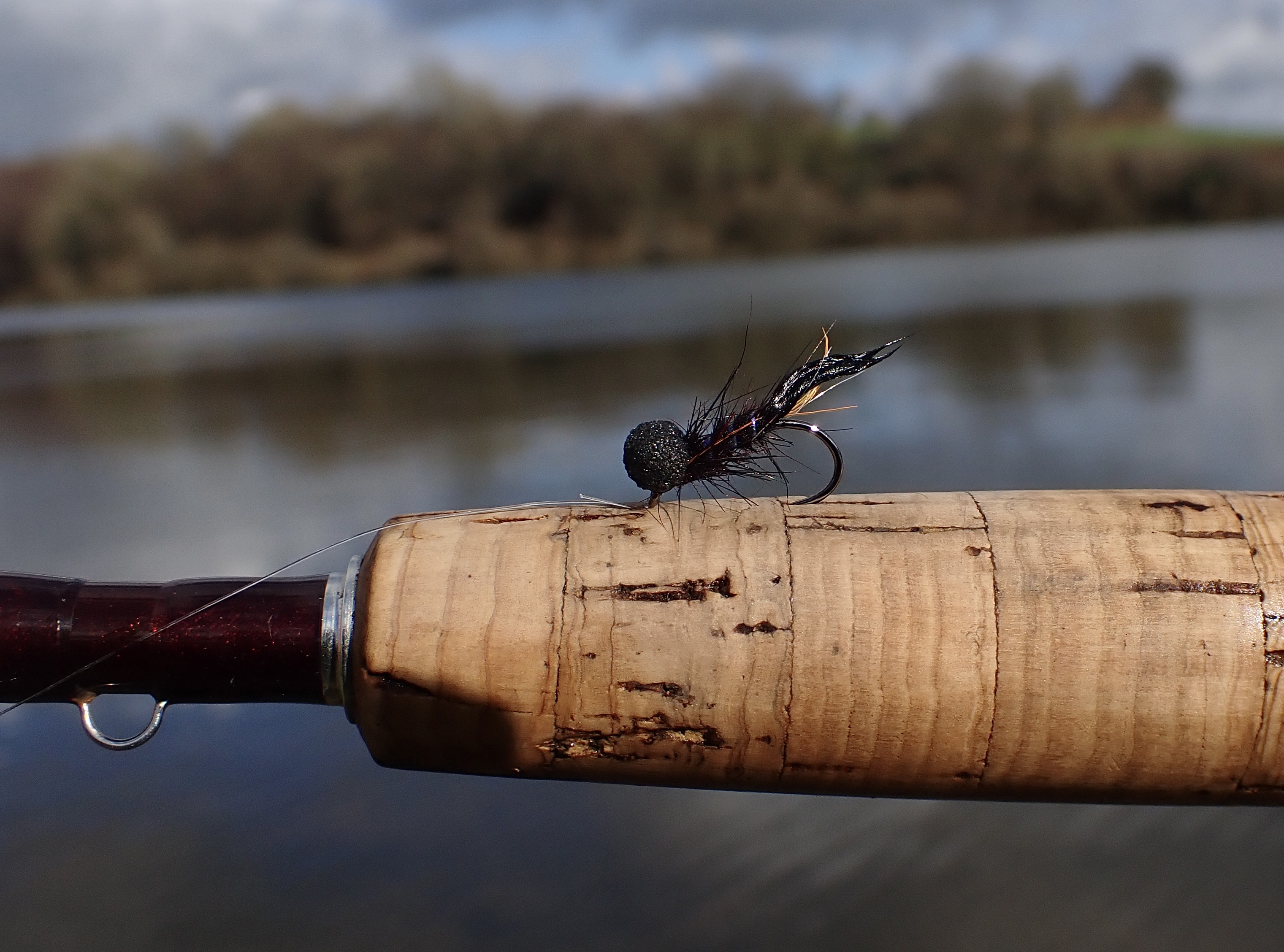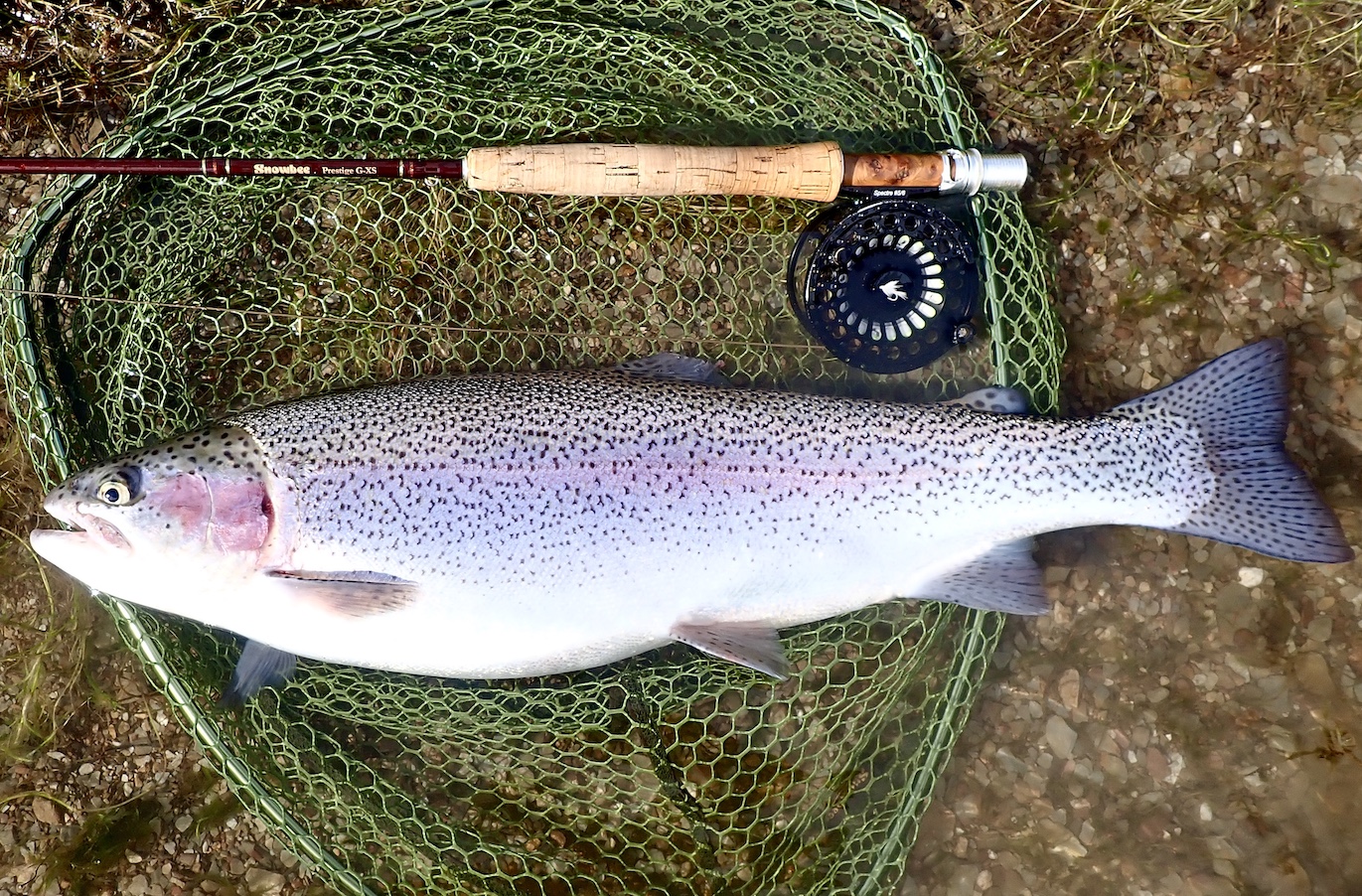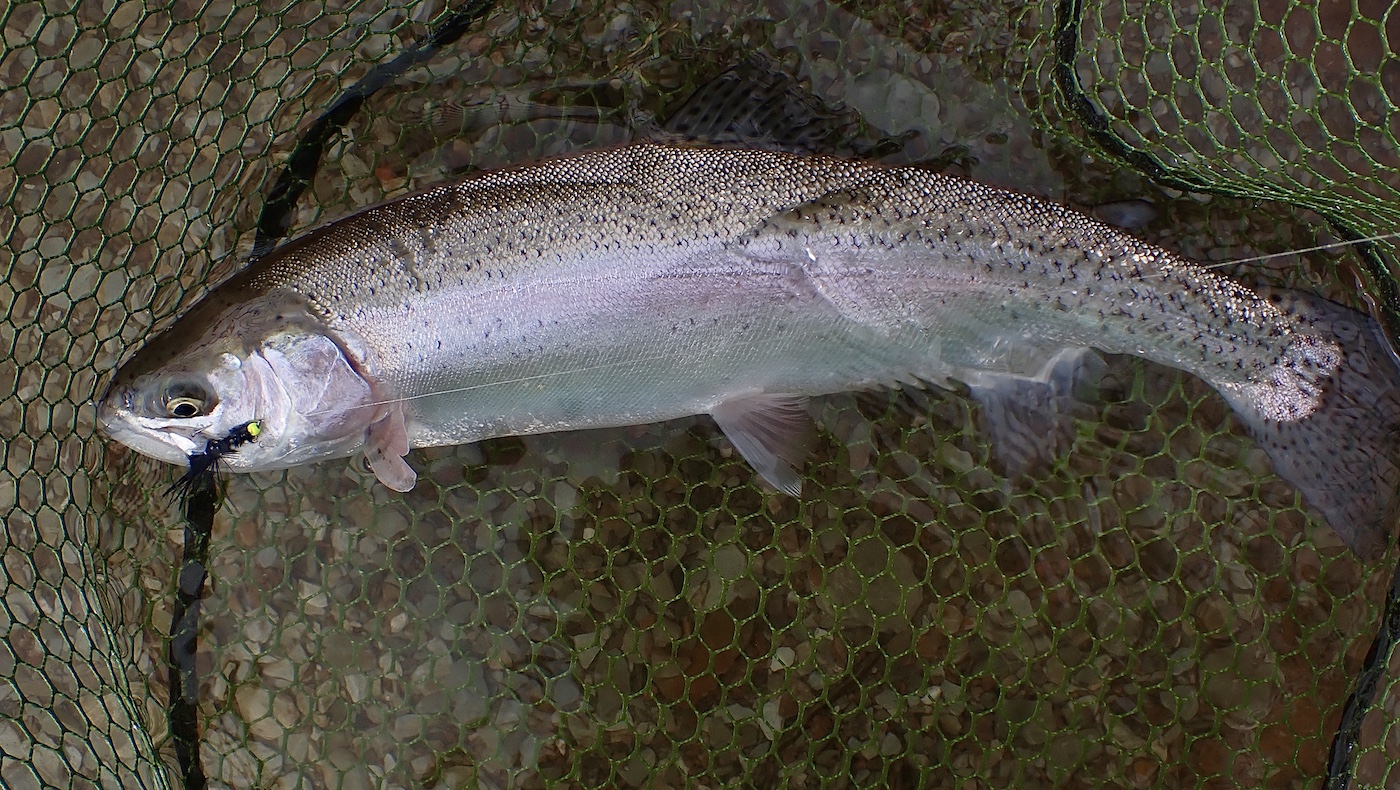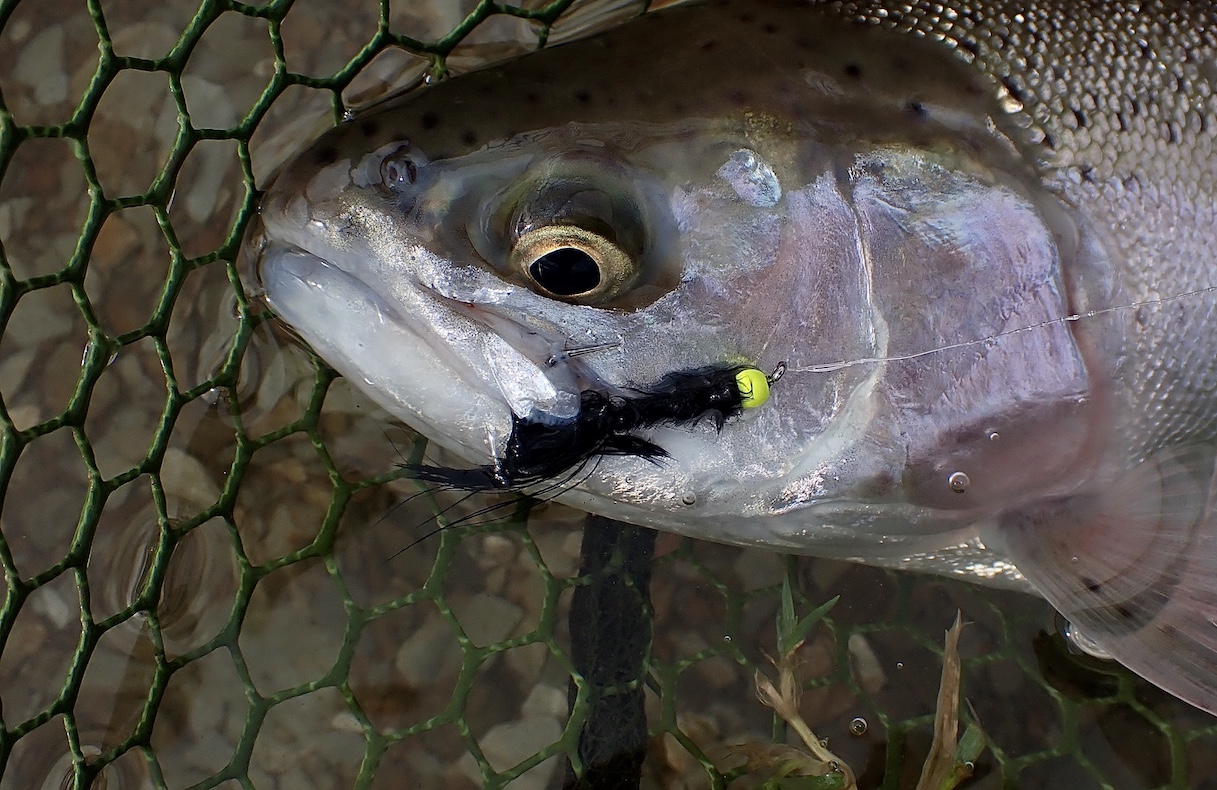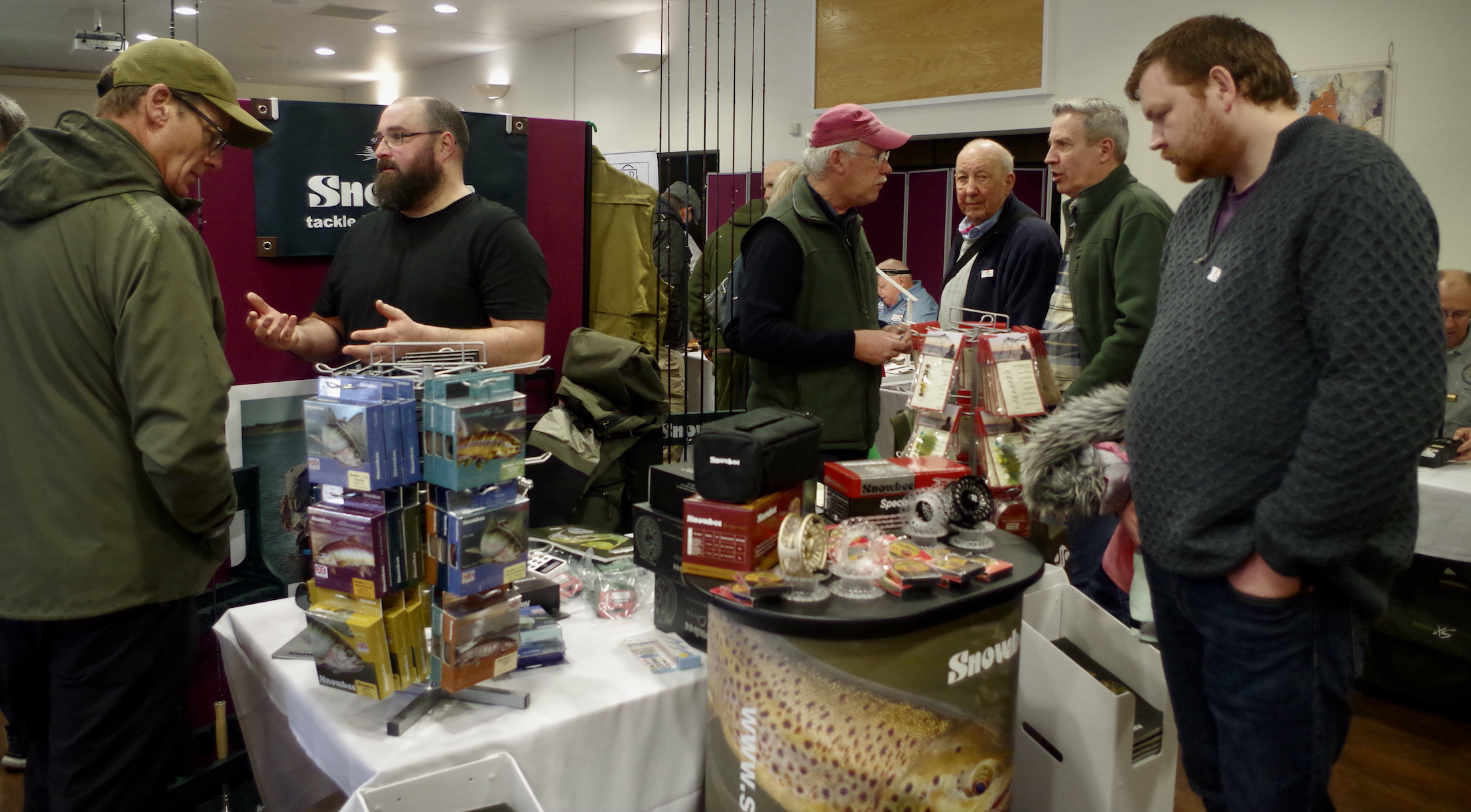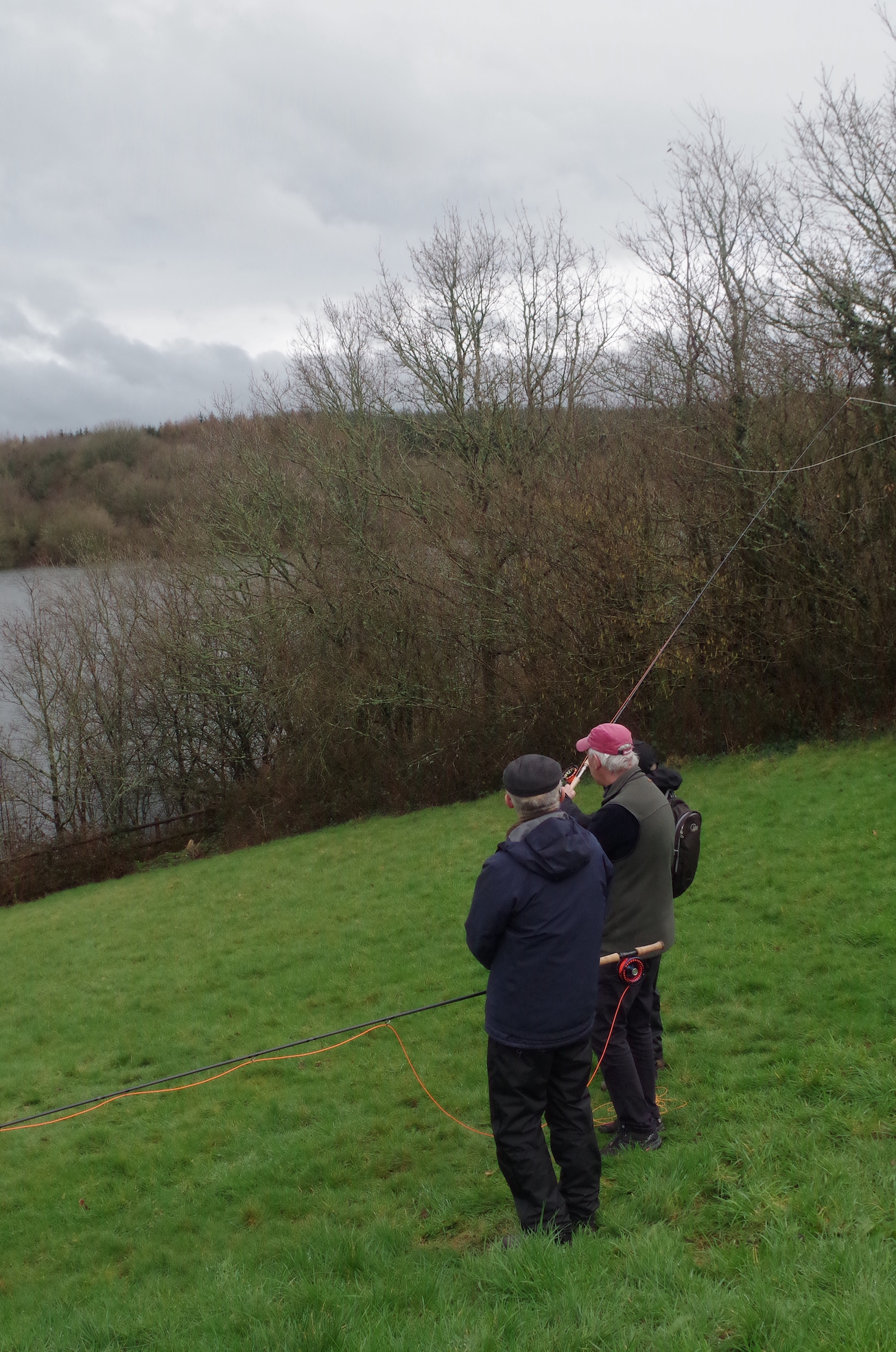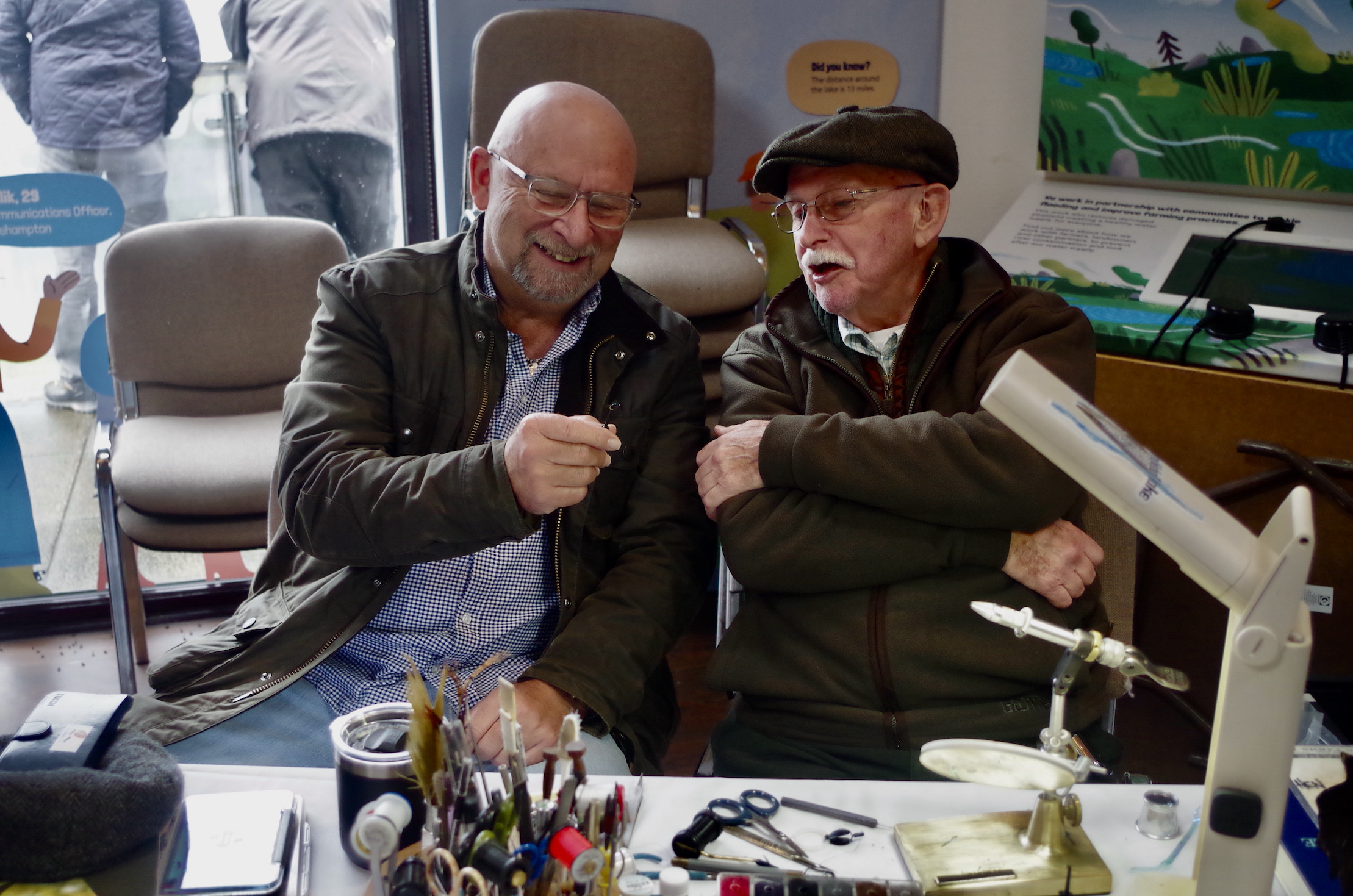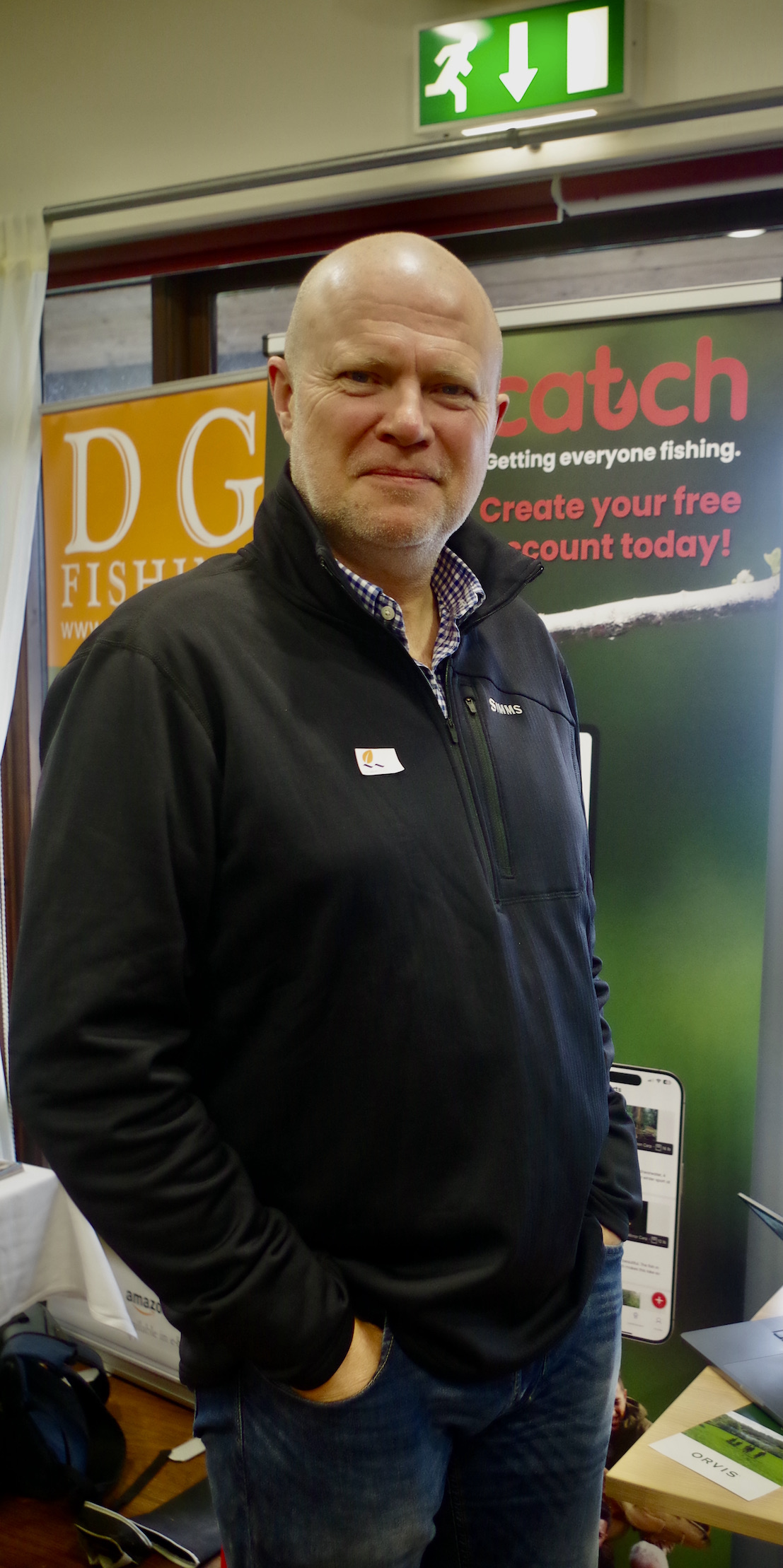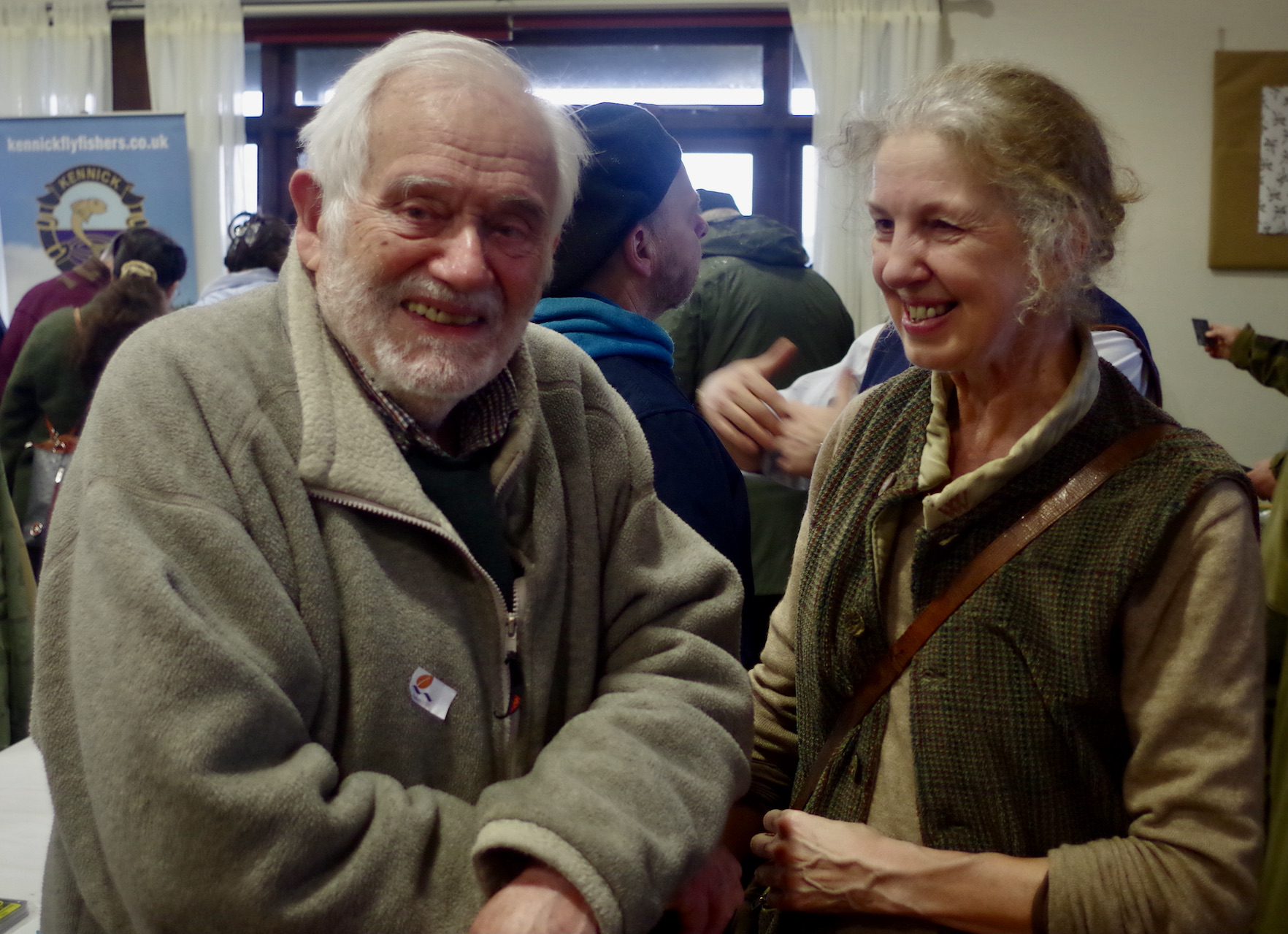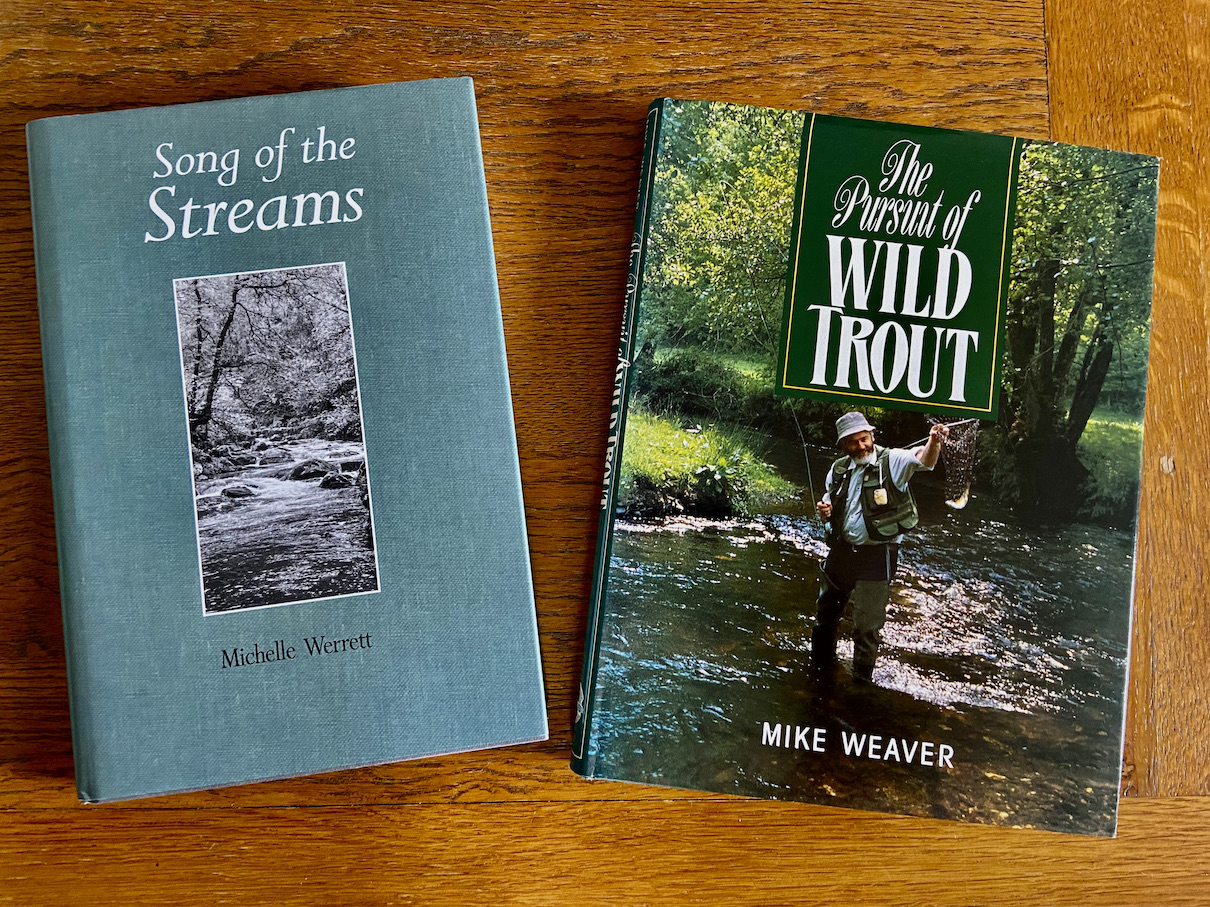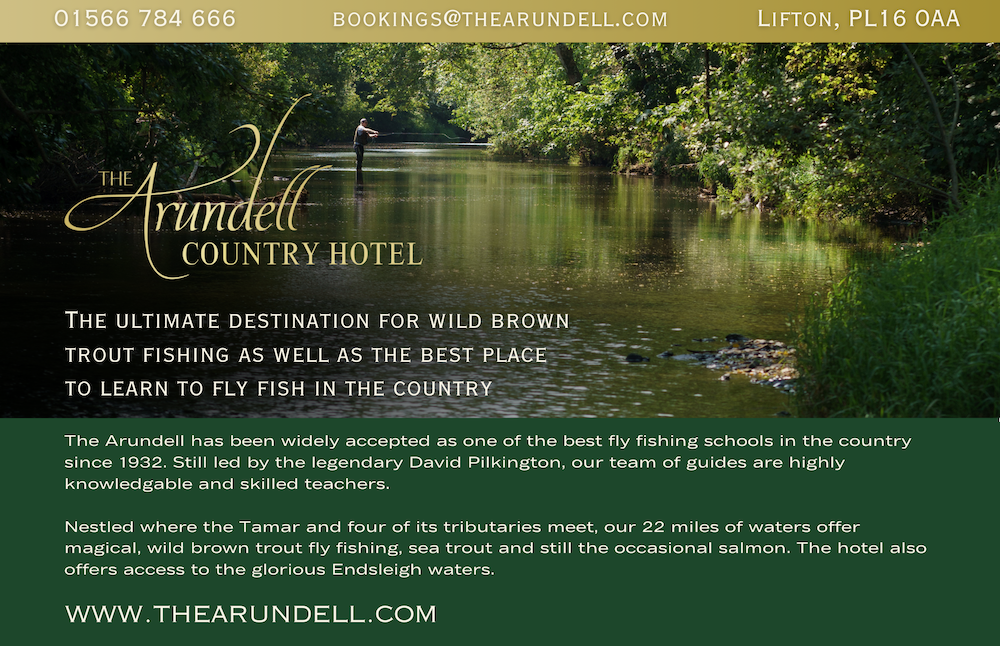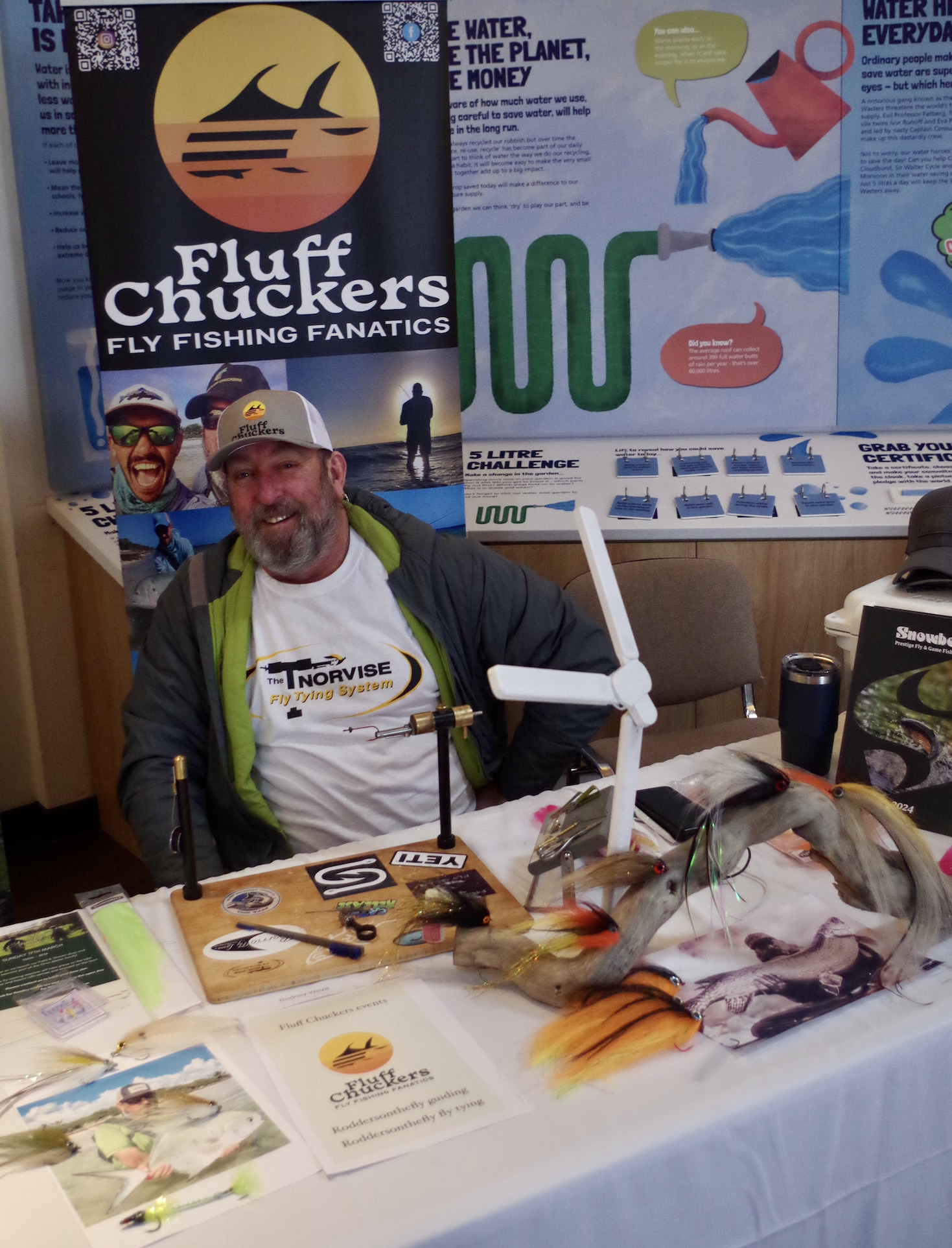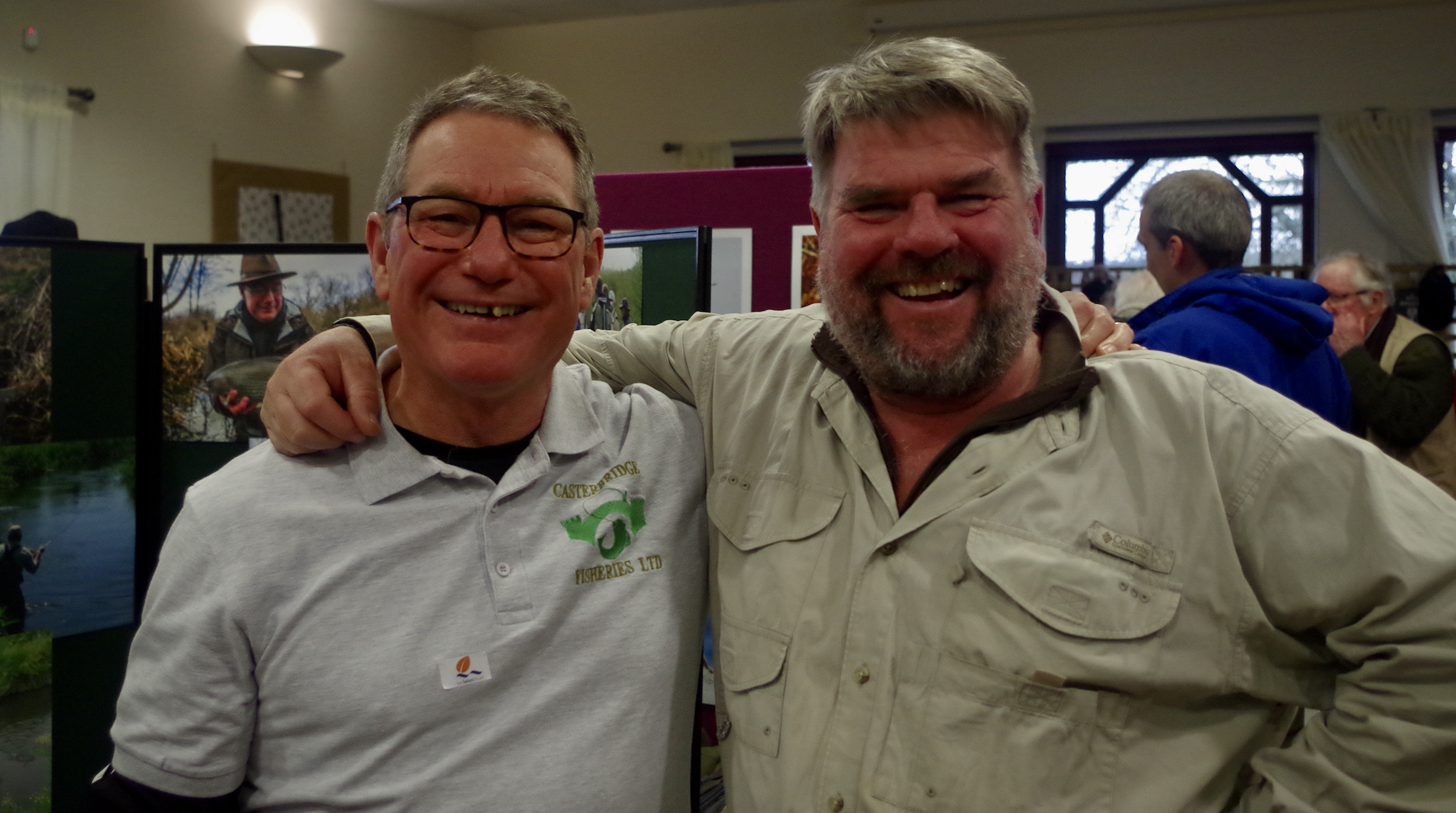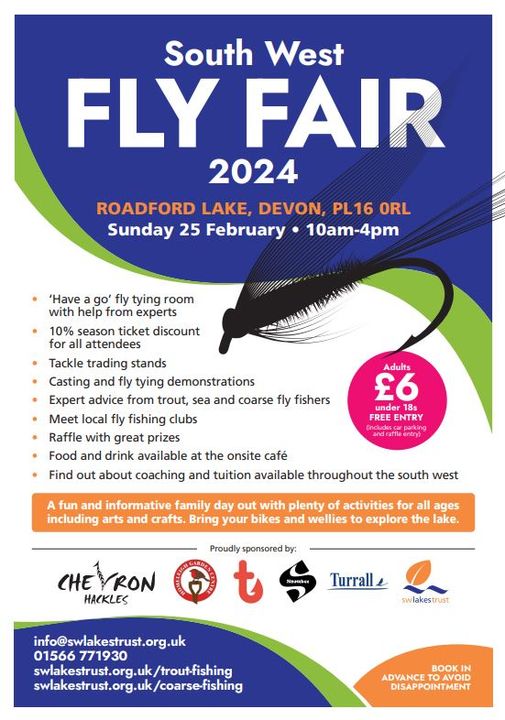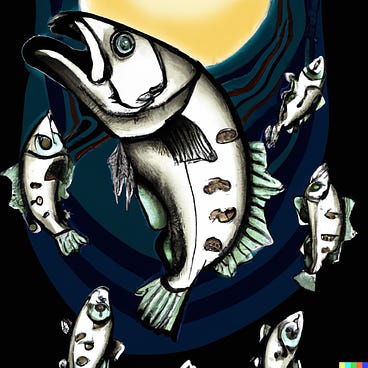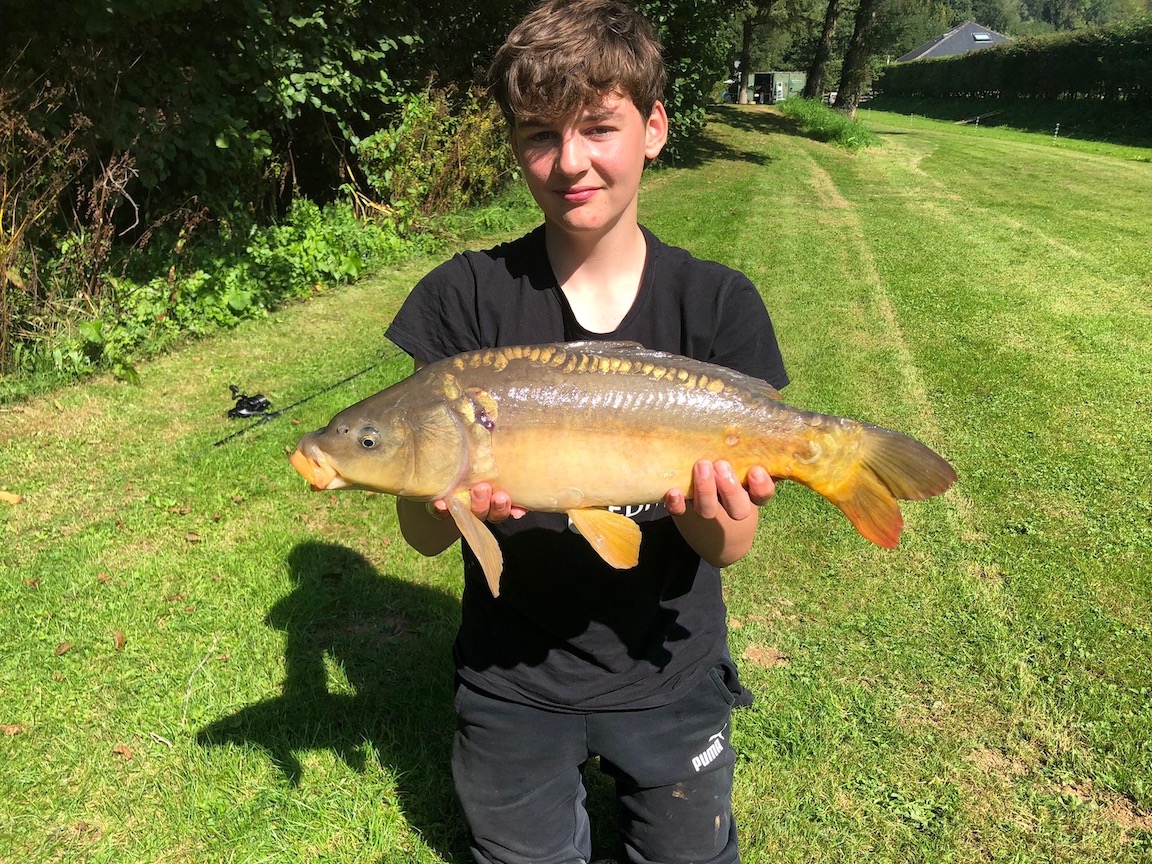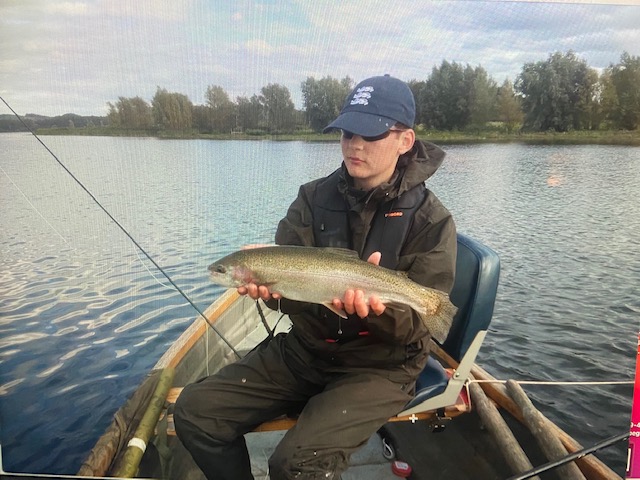But the conditions suited the browns with Roger Truscott netting the most fish with 12 lovely browns.
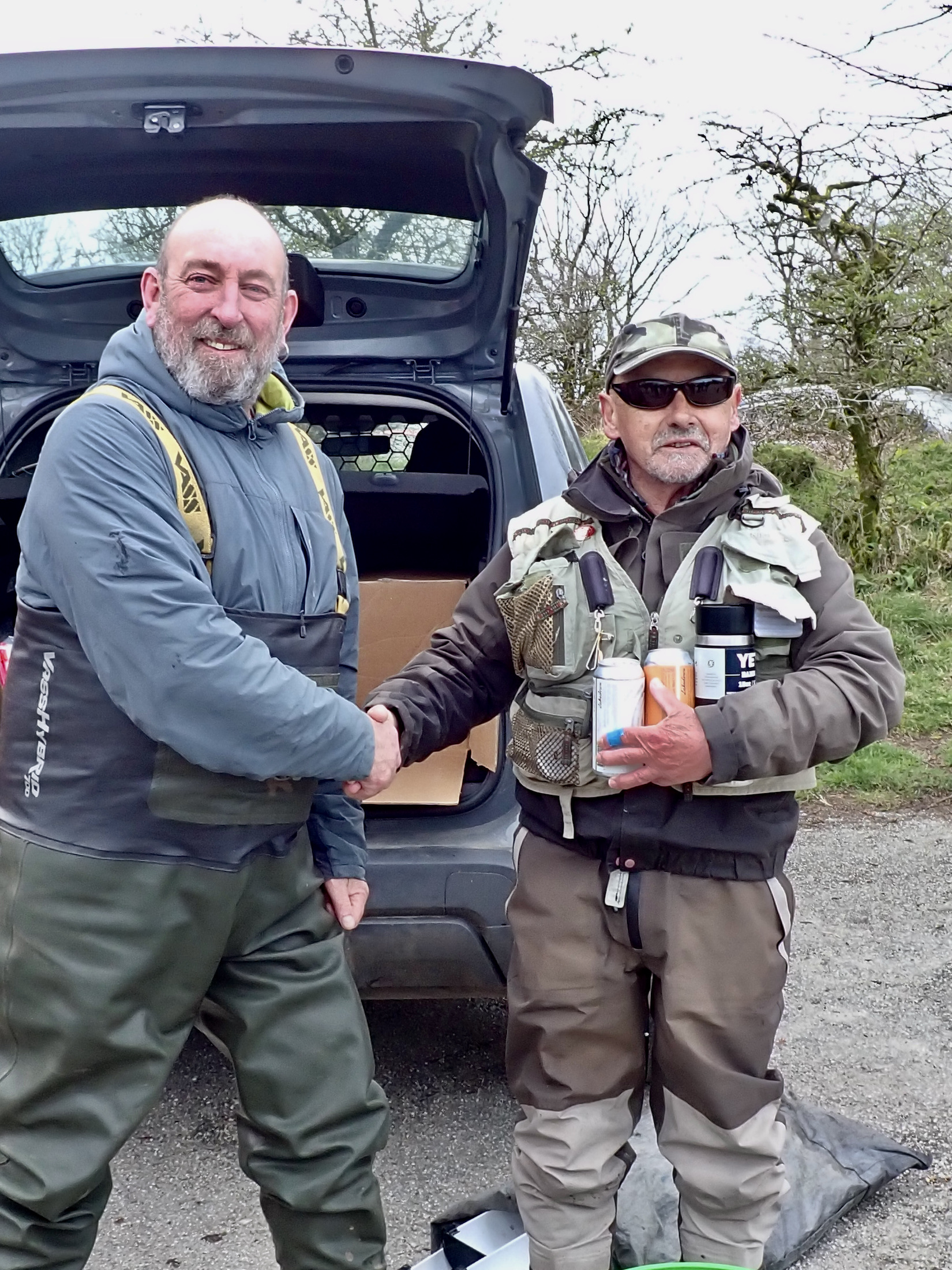
Runner up for most fish was Keith Burnett with 4 good fish to the net.
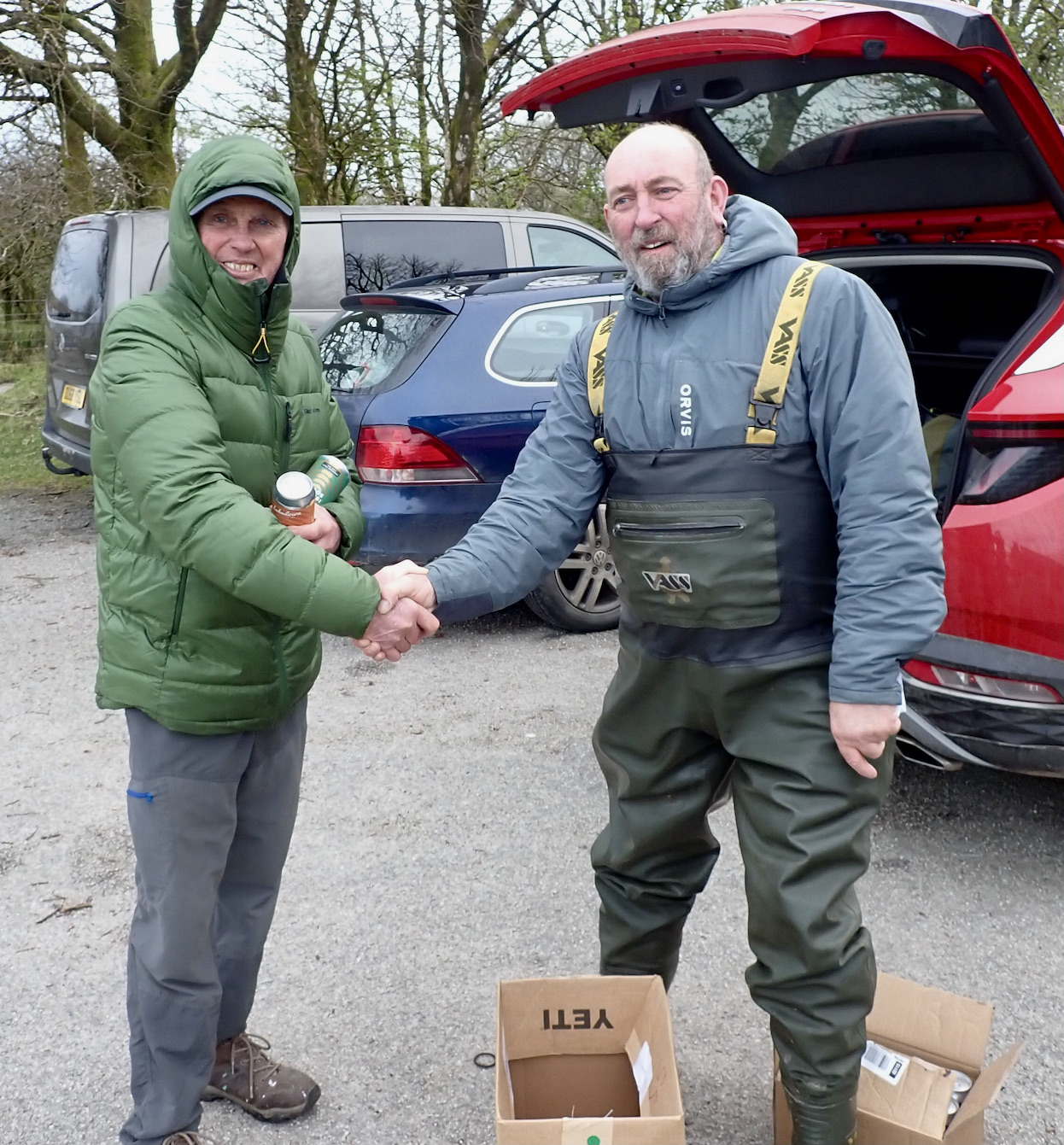
The largest fish of the day went to Kevin Sellar with a fantastic 44cm fish with similar markings to a spartic trout .
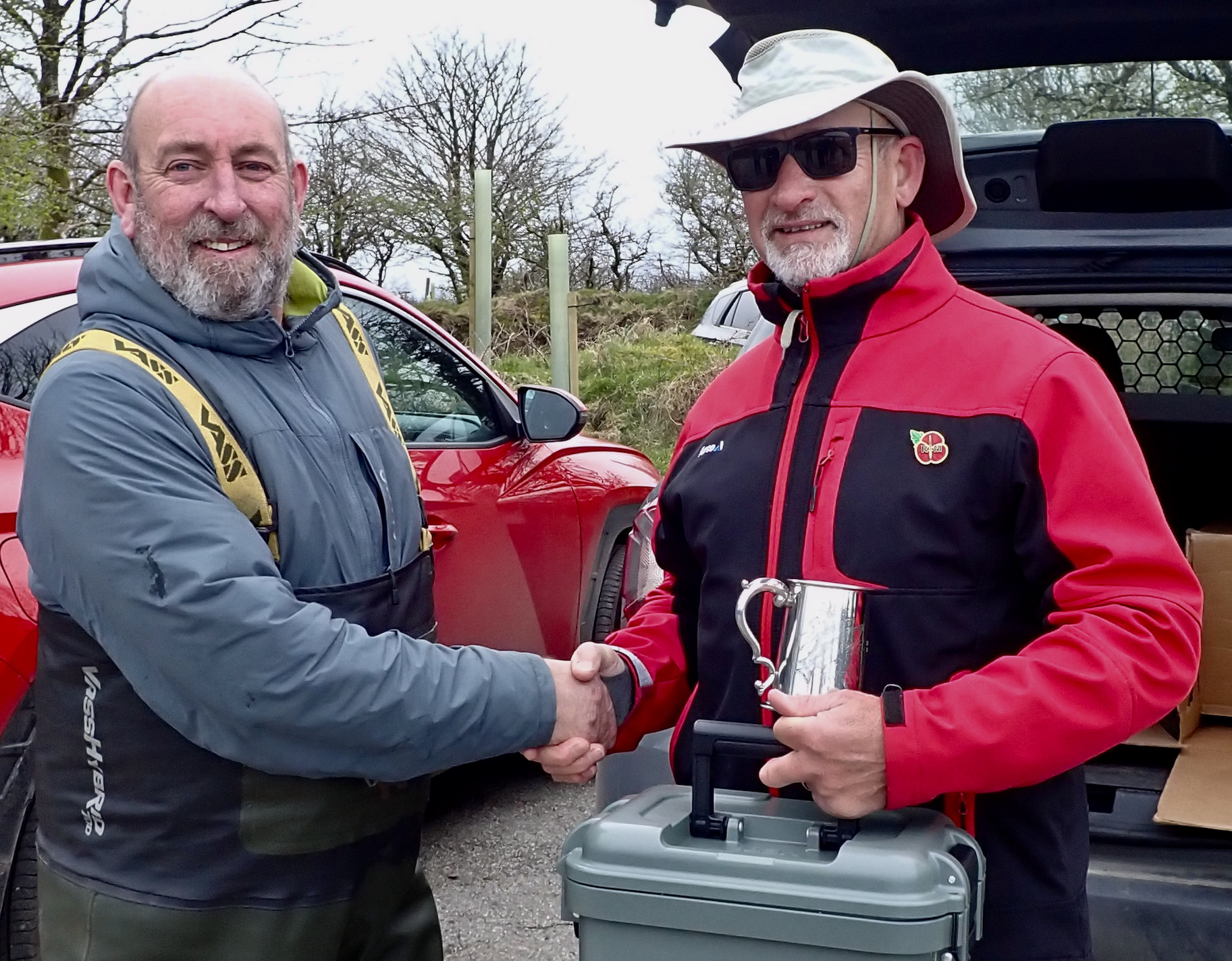
Runner up largest fish went to Philip Hoskin with another lovely fish of 40cm.
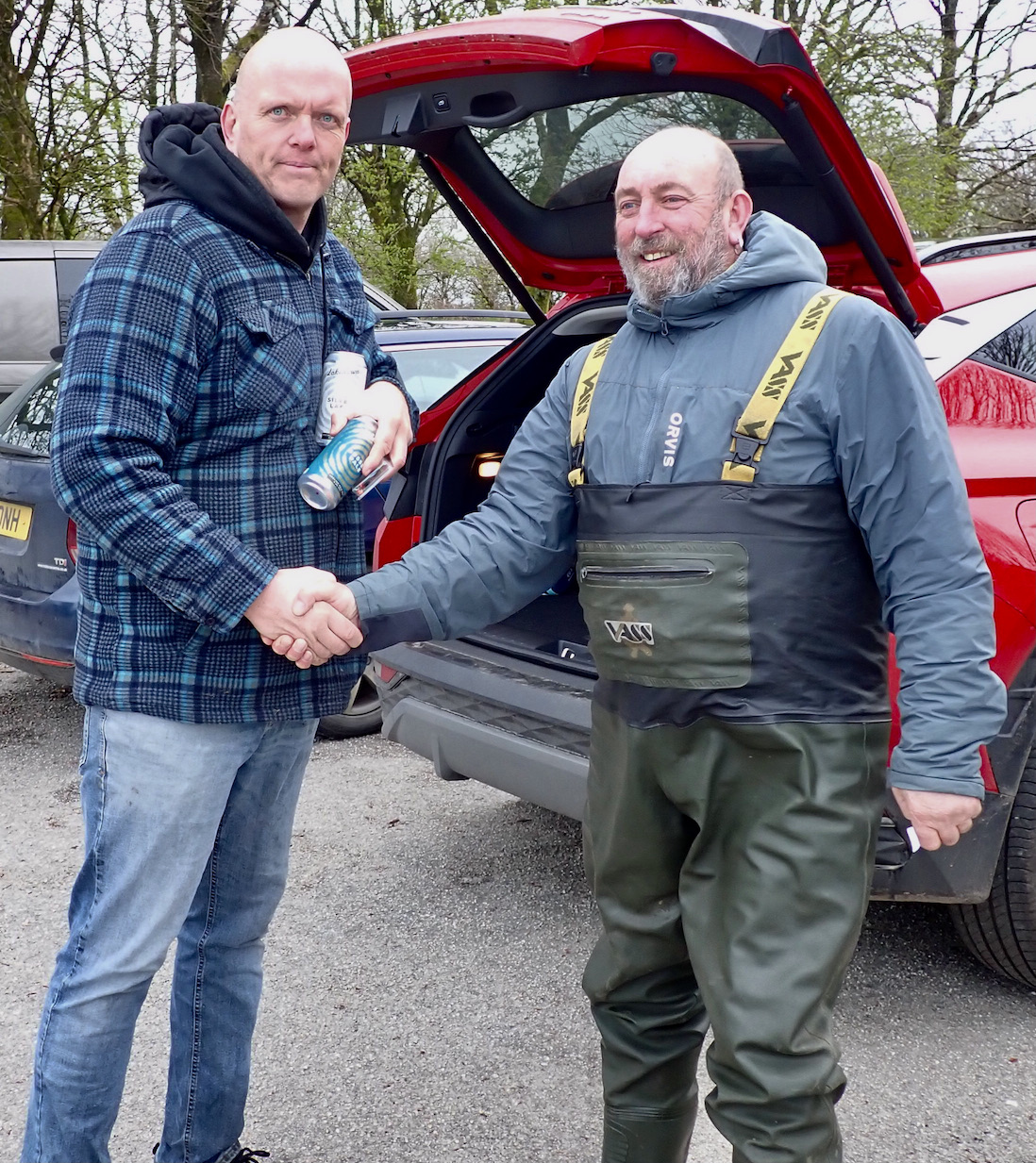
Roger Truscott 363CM
Keith Burnett 126CM
Wayne Thomas 98CM
Richard Adeney 96CM
Philip Hoskin 93CM
Kevin Sellar 74CM
Matt Rodwell 67CM
Ben Elliott 64CM
Dave Perks 64CM
Rodney Wevill 56CM
Sławomir Olaf Pilecki 32CM
Jack Welshman 30CM
Pete Williams 28CM
Peter Finnis ——
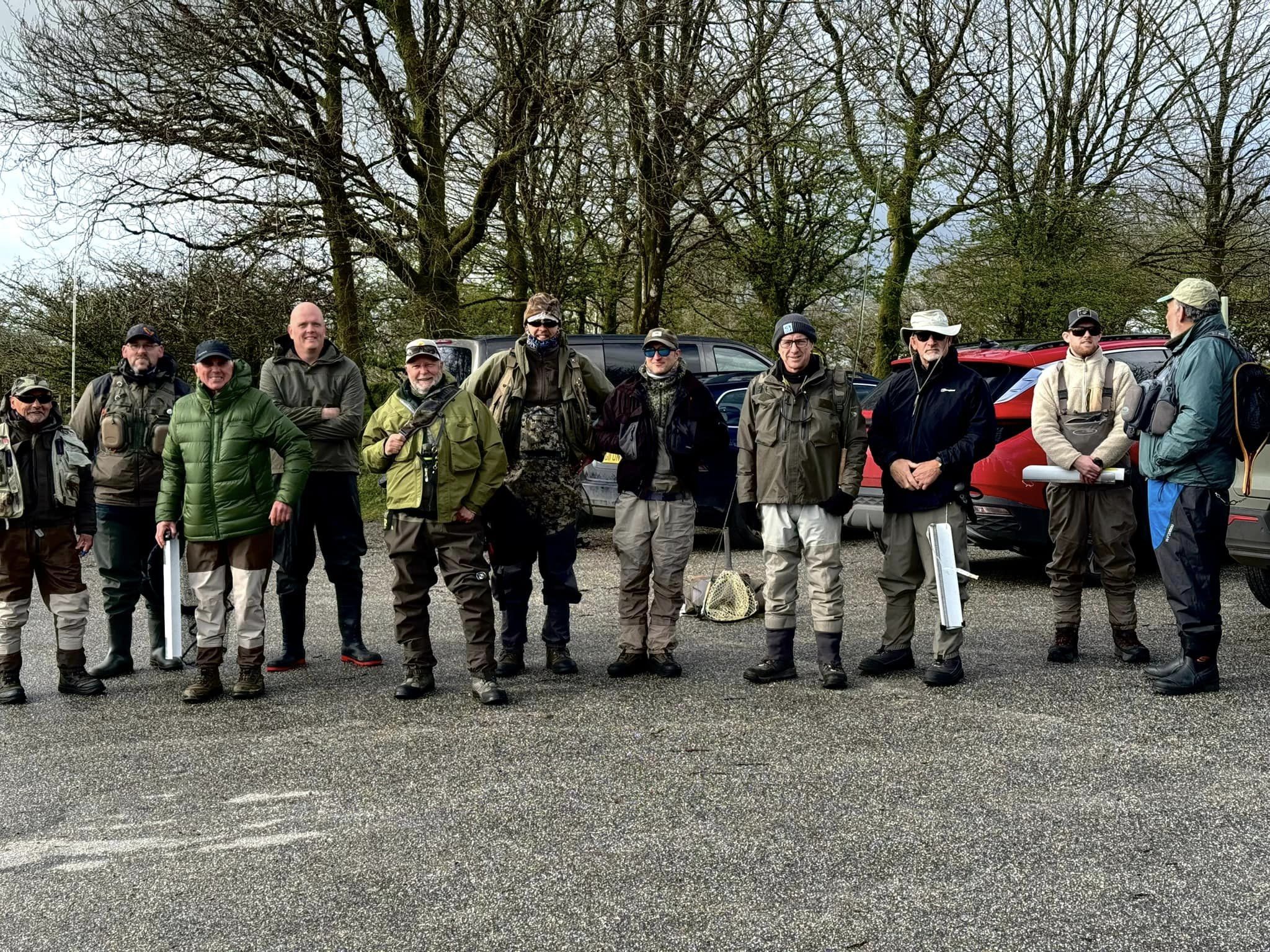
My day at Colliford – A cunning plan
Colliford Reservoir high on Bodmin Moor was the venue for the first leg of the Fluff Chucker’s and SWLT Brown Trout Masters. With a favourable weather forecast I was looking forward to a Spring day targeting the brown trout for which this venue is renowned.
I arrived at the assembly point to meet fellow Fluff Chucker’s and on stepping out of the car I was pleased that I had dressed up for temperatures were far lower than forecast. Whilst the wind was Southerly it felt particularly Baltic as the wind swept across the 900 acres of water.
The atmosphere was cheerful and friendly as angler’s swapped tales and talked of prospects for the day ahead. The rules were carefully explained by head Fluff Chucker Rodney Wevill. At 9.00am suited and booted up, the go fishing call was made and we all set off for our chosen areas.
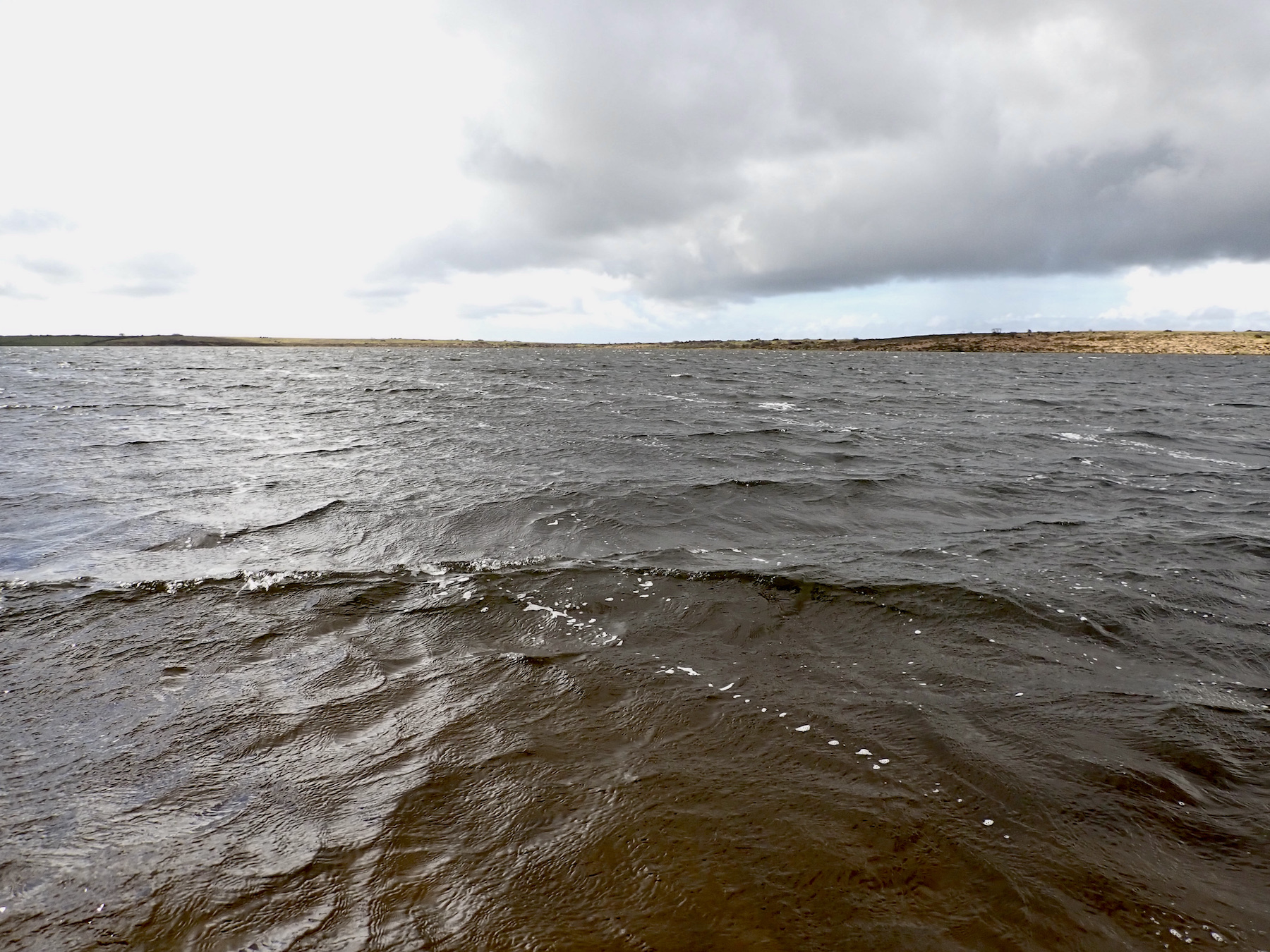
I had only fished the venue on one previous occasion so headed for the area I had fished before two years ago. Like Baldrick of Black Adder fame I had a cunning plan! Basically I would wander the shoreline casting a black woolly bugger on the point and a small black spider on the dropper. I would cast and take a step covering plenty of water.
I had every confidence in my cunning plan and persisted throughout the morning. After two hours I had not had a pull but surely persistence would pay off? Dark clouds crept ominously closer and the chill wind showed no sign of relenting. An angler fishing further along the bank caught a trout which gave me hope but also made me wonder if my lack of success was unique to me?
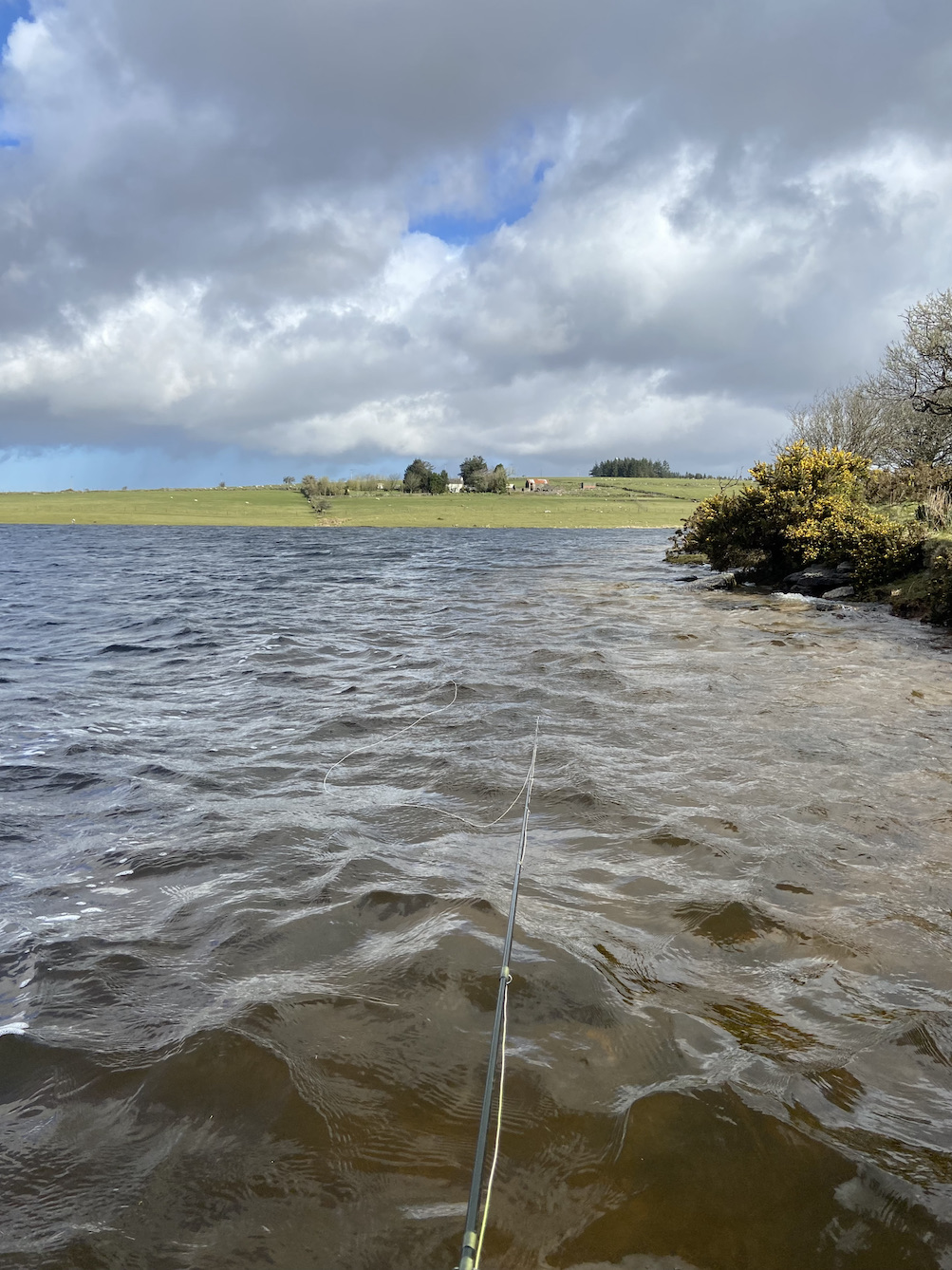
As heavy rain started to fall I thought of breaking for a drink and snack but all thoughts of this were put on hold as the line zipped tight and a lovely brown trout gave a pleasing account before slipping into the waiting net. After slipping the hook out and recording the fish I resumed fishing confidence fully restored. A few casts later and a savage tug a big swirl at the fly. Looked like a good fish and a chance gone. I fished on down through the bay and then retraced my steps fishing over the successful section again.
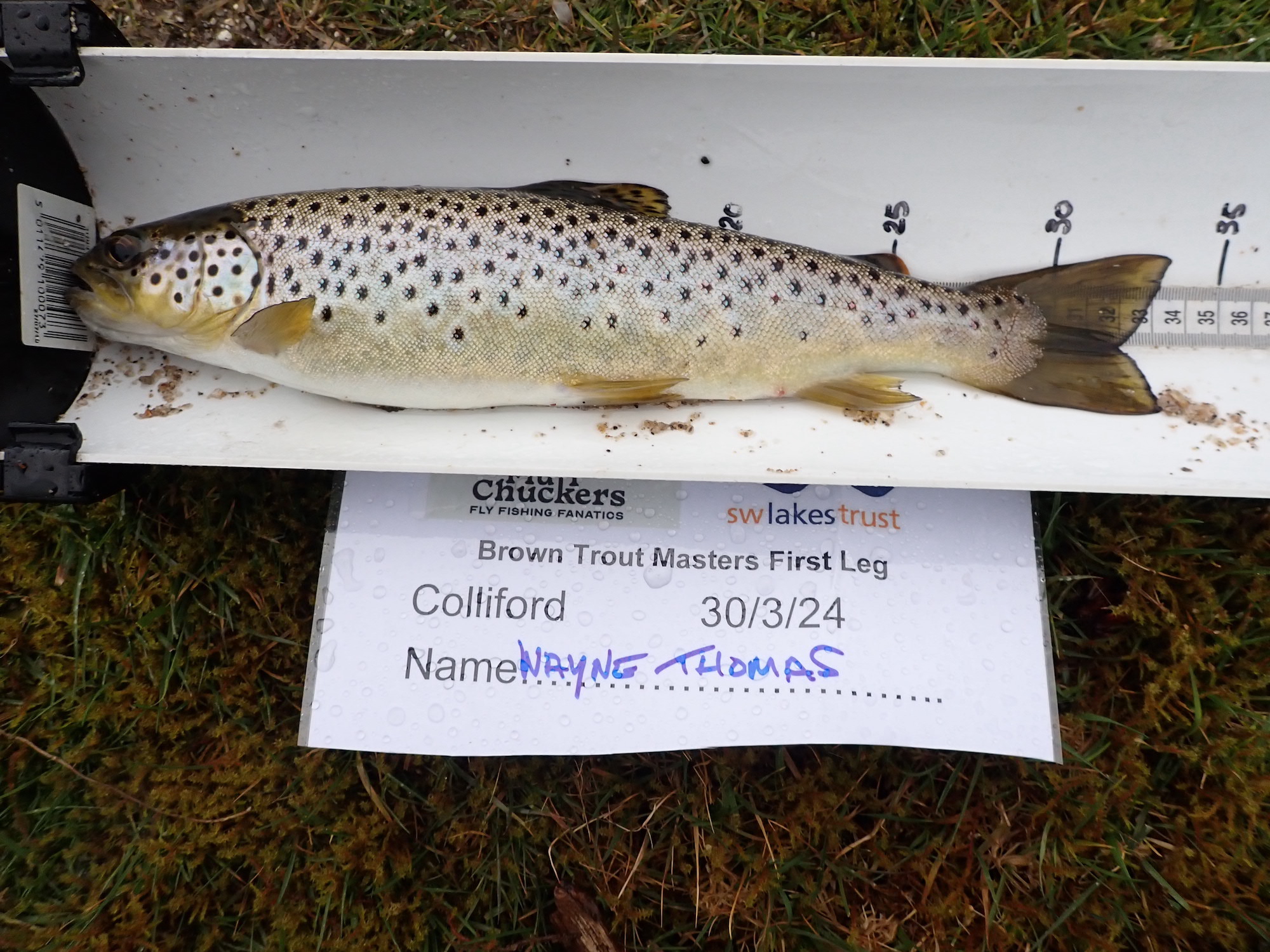
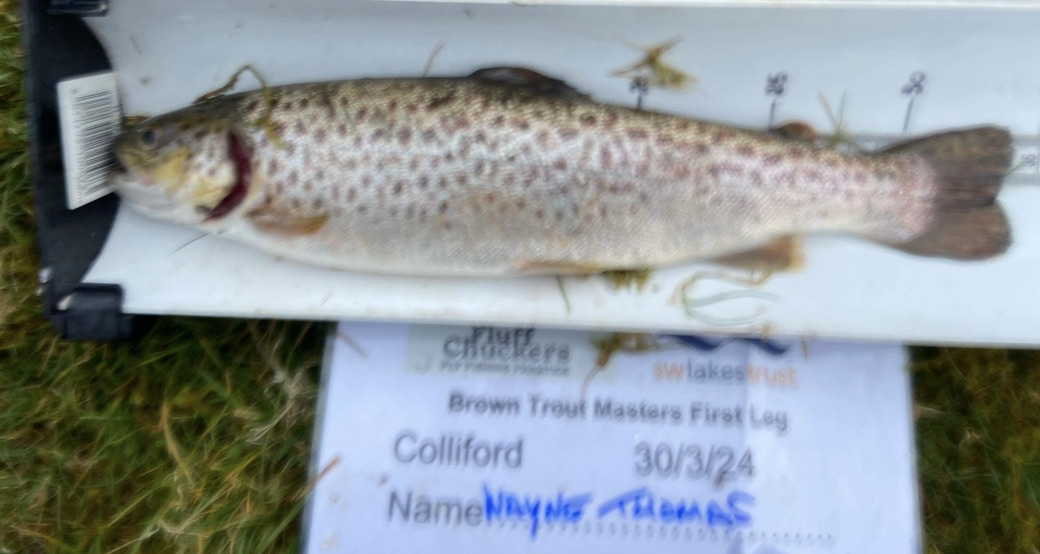
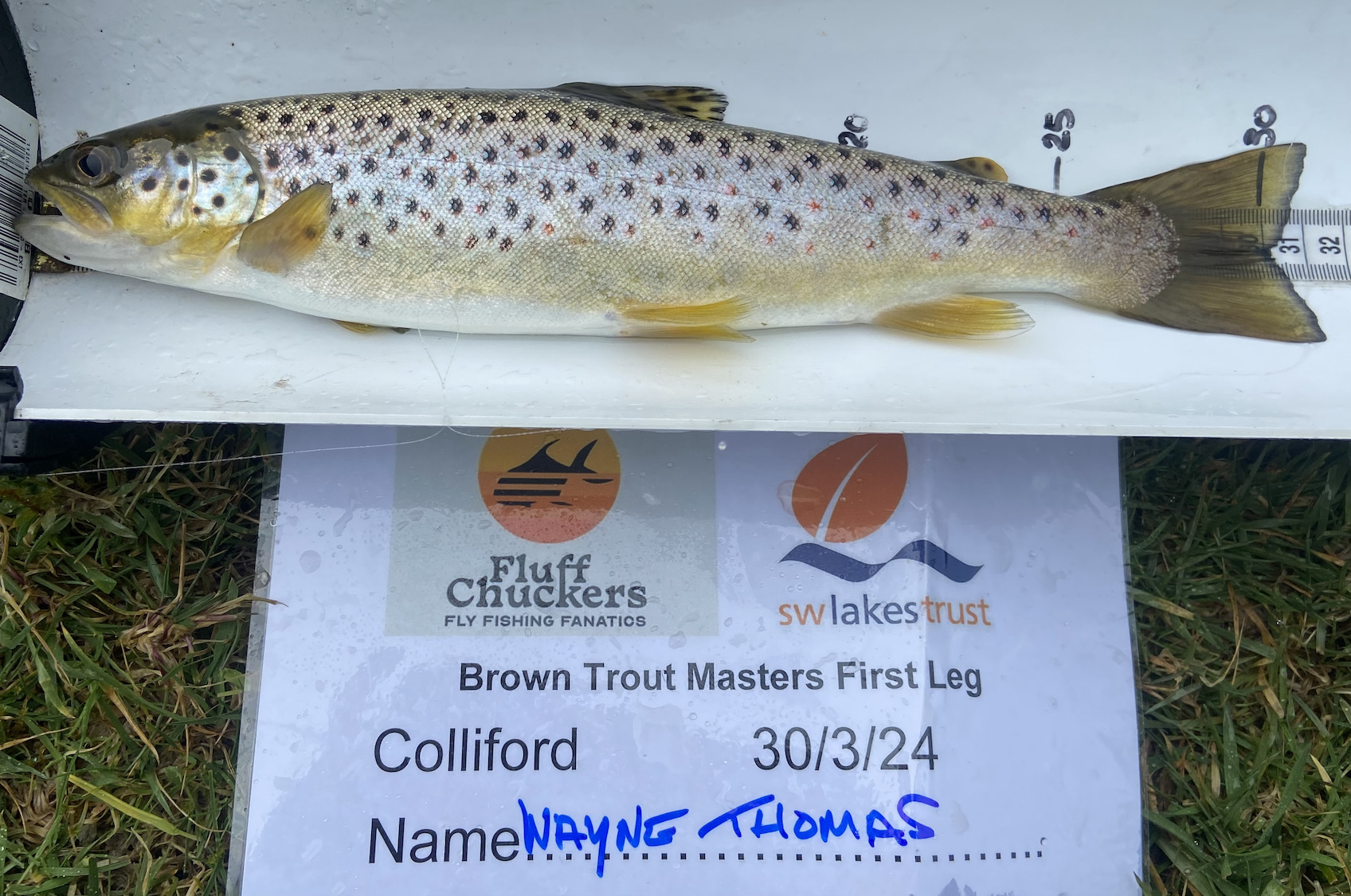
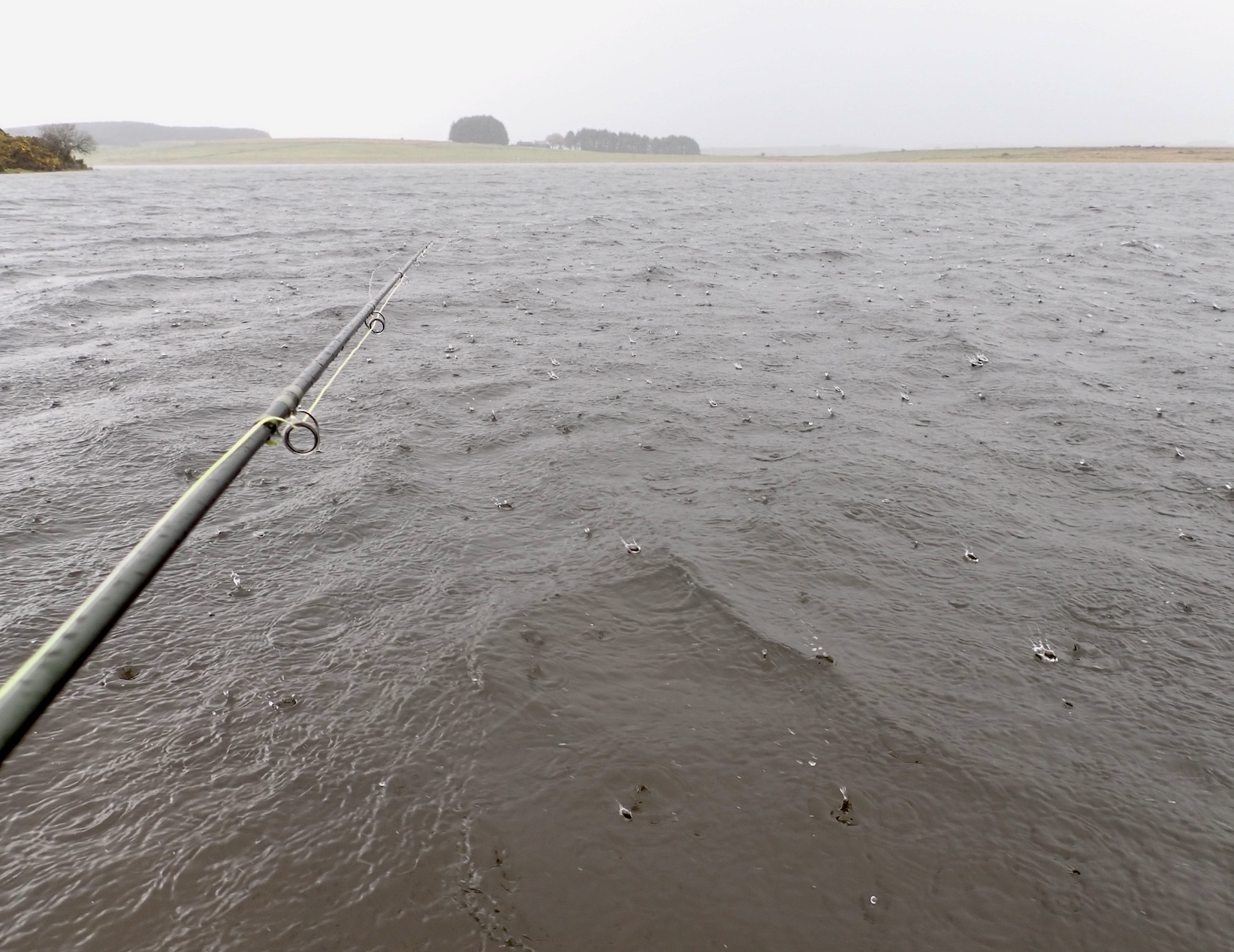
Two more trout followed in the next twenty minutes before all seemed to go quiet. I decided to try a new area and walked to a new section of bank. After half a dozen casts I hooked another trout that came off after 30 seconds.
With a few hours left in the day I decided to try the hotspot one more time before working my way slowly back to where I had started the day. I bumped into a couple of fellow fluff chucker’s on route and compared notes to find that whilst most had caught no one seemed to have bagged up big time.
The cold wind persisted but at least the cold rain had stopped falling. I heard sky-larks song drifting in the breeze. I looked out for early spring migrants hoping to see my first swallow or sand martin but the skies remained devoid of these harbingers of Spring and summer. At least the lake was brim full after an exceptionally wet winter.
I found some quieter water at the top of the lake and climbed out onto an old bank that allowed a nice long cast parallel to the reed fringed shore line. A trout rose within casting range and I instinctively changed my tip fly to a small tungsten headed black spider.
The cast landed perfectly and within seconds of touching down the line zipped tight and there was a boil on the surface. B***er another chance gone.
I fished on for the next half an hour without a pull and eventually called it a day with a couple of minutes before competition end.
I walked back to see what had been caught and found that I had done Ok. A couple of big trout had been tempted the best a beauty of 44cm. Venue regular Roger Truscott recorded twelve browns and had been favourite to win from the start.
Reflecting on my day I was pleased to finish third one more fish would have resulted in runner up spot. I should perhaps have persisted in the area I had caught in but the general consensus seems to be that roving works best. A classic case of should I stay or should I go?
I reality it really doesn’t matter for I had enjoyed the day immensely despite the cold wind and chilled fingers. I look forward to heat two in June when it will surely be warmer?
Many thanks to Rodney Wevill for all his efforts in putting the series together and of course to SWLT, Yeti, Lakedown Brewing co and for their generous support.
